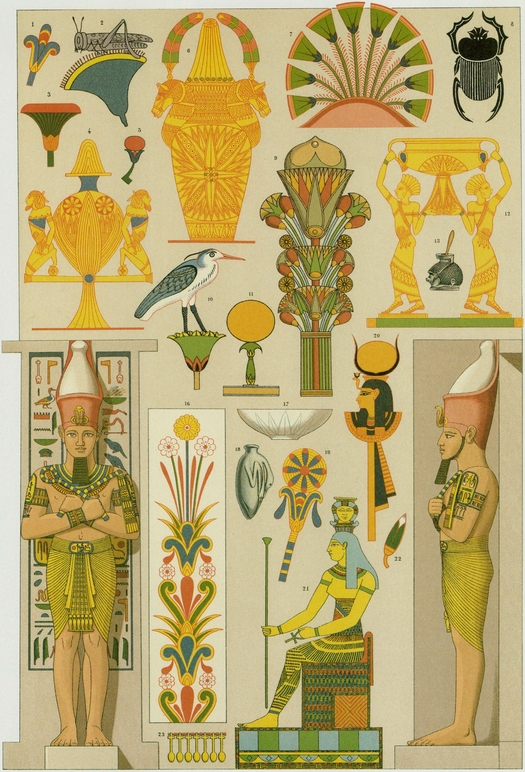
1. Ancient Egypt: Motifs from murals and reliefs, and various objects.
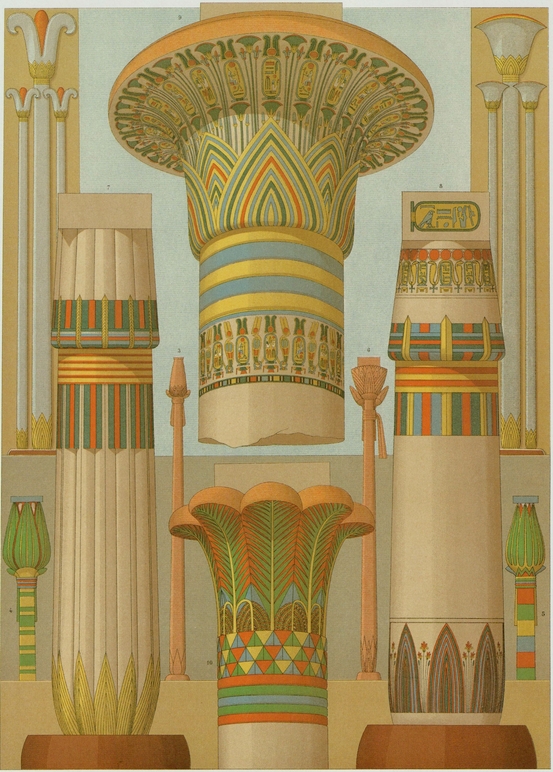
2. Ancient Egypt: Columns and colonnettes with plant motifs.

3. Ancient Egypt: Painted tomb ceilings and friezes.

4. Ancient Greece: Vase paintings, capitals and a mosaic.
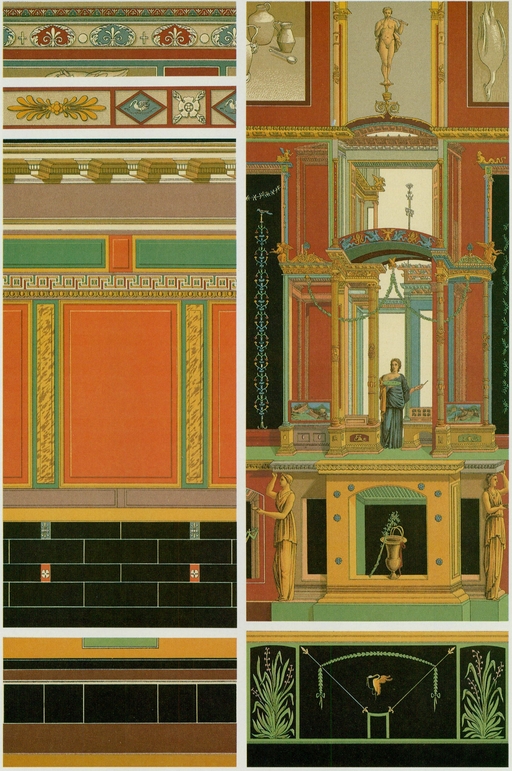
5. Ancient Italy: Wall paintings from Pompeii.
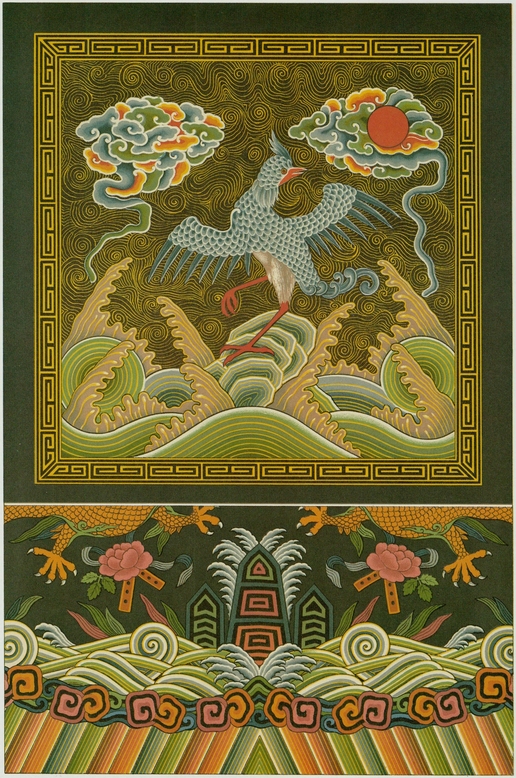
6. China: Embroideries (mandarin badge and detail from a court robe).
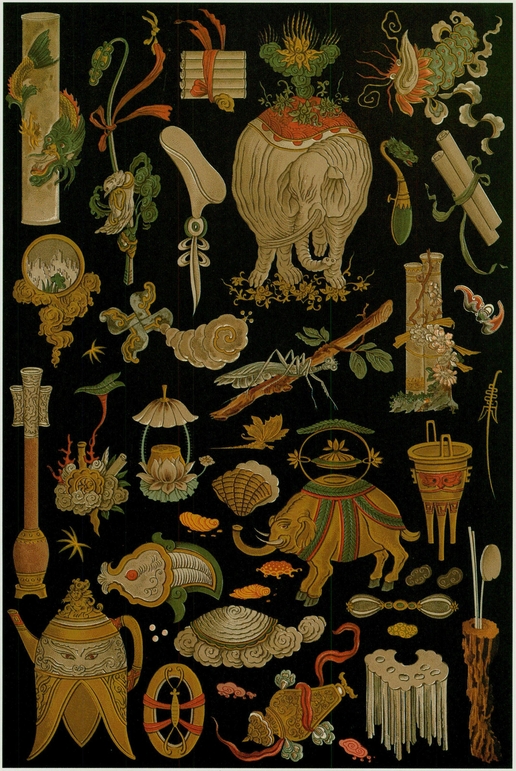
7. China: Painted and gilt motifs from lacquered wood.
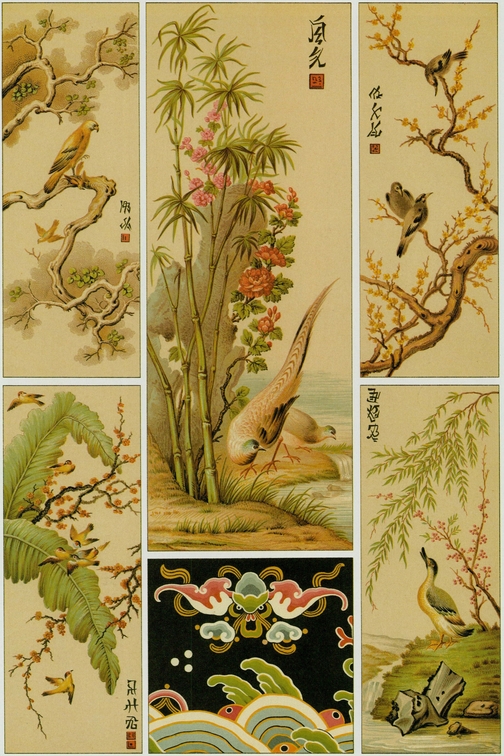
8. China: Embroidery and decorative paintings.
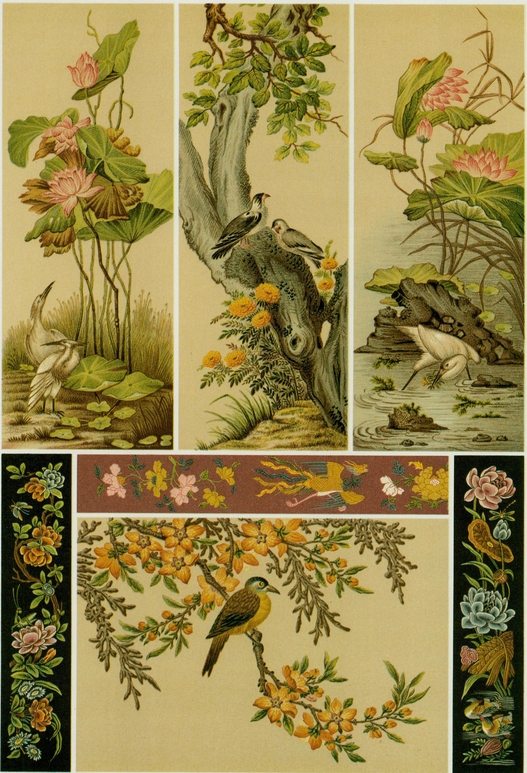
9. China: Paintings, embroideries, printed fabrics.
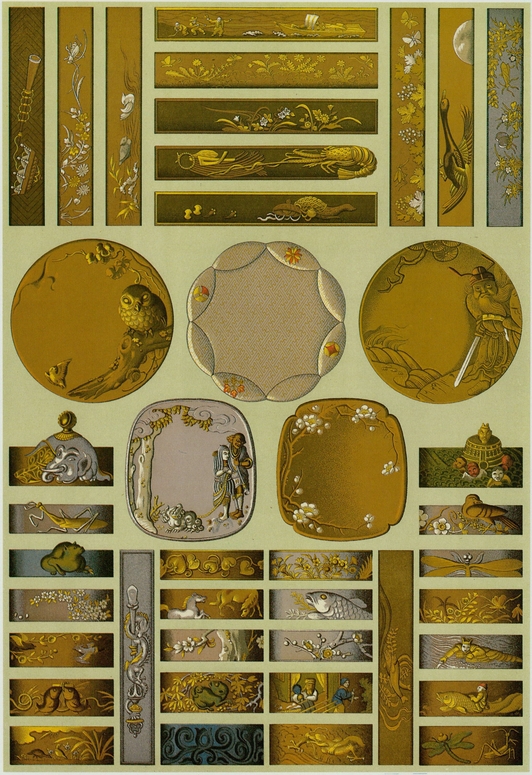
10. Japan: Sword and knife guards and handles, metal.
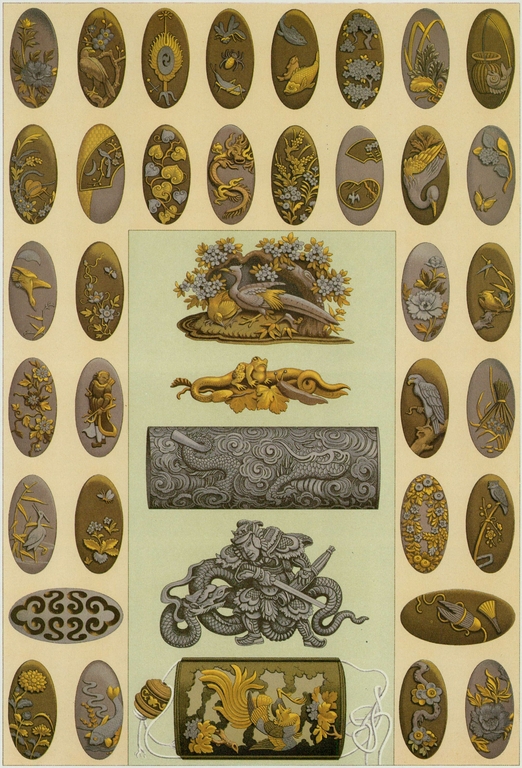
11. Japan: Metal decorations of weapons and everyday objects.
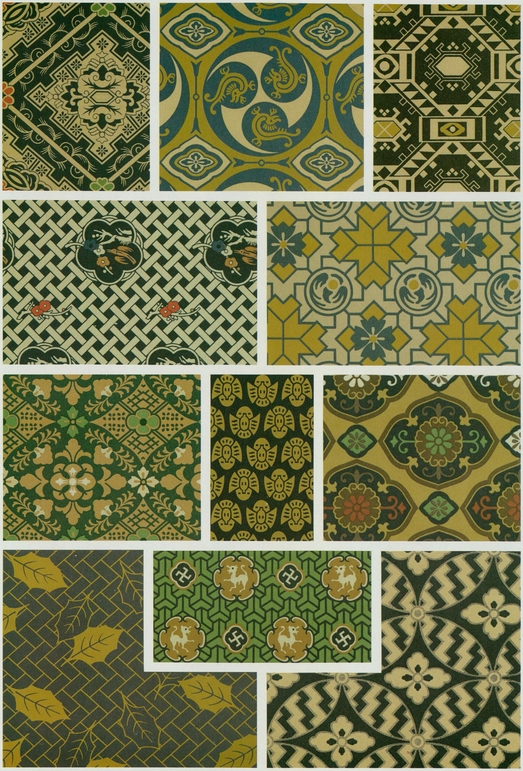
12. Japan: Motifs from textiles of the 17th and 18th centuries.
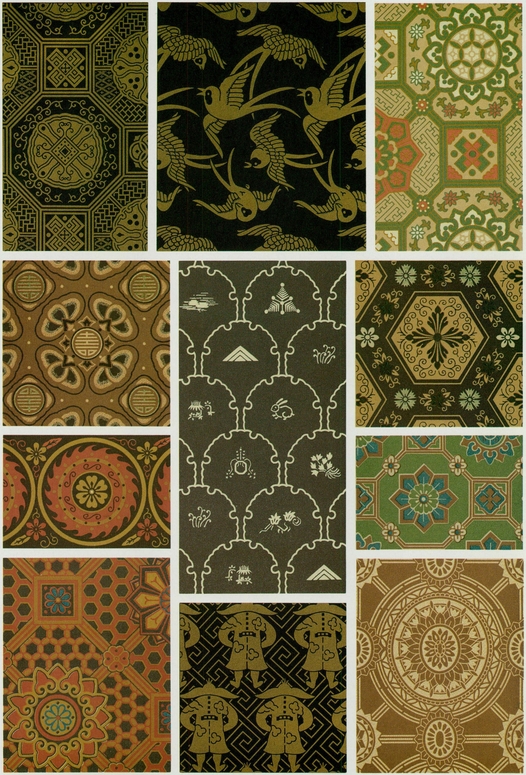
13. Japan: Motifs from textiles of the 17th and 18th centuries.
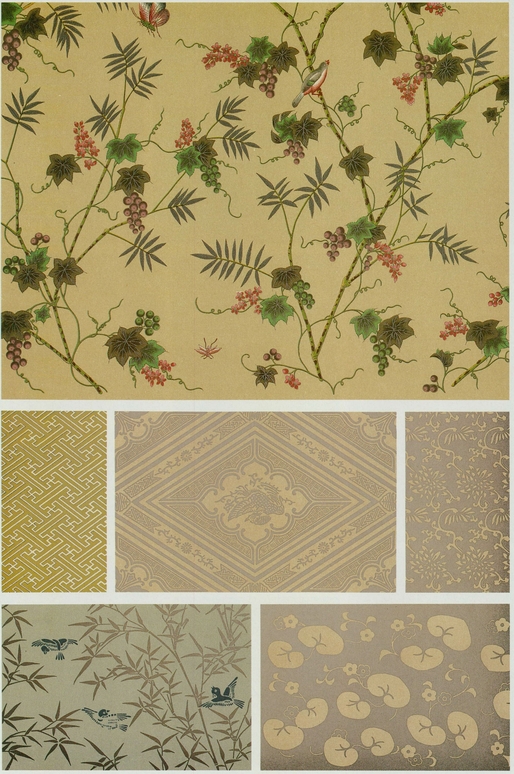
14. Japan: Printed wallpapers.
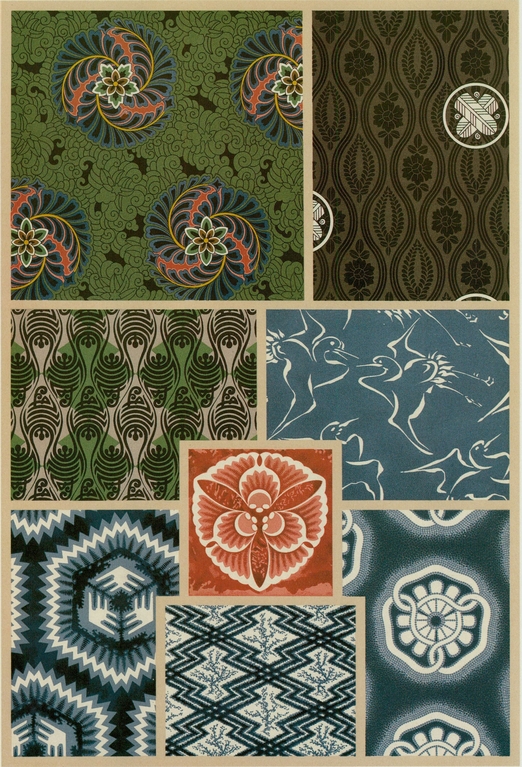
15. Japan: Motifs from textiles and wallpapers.
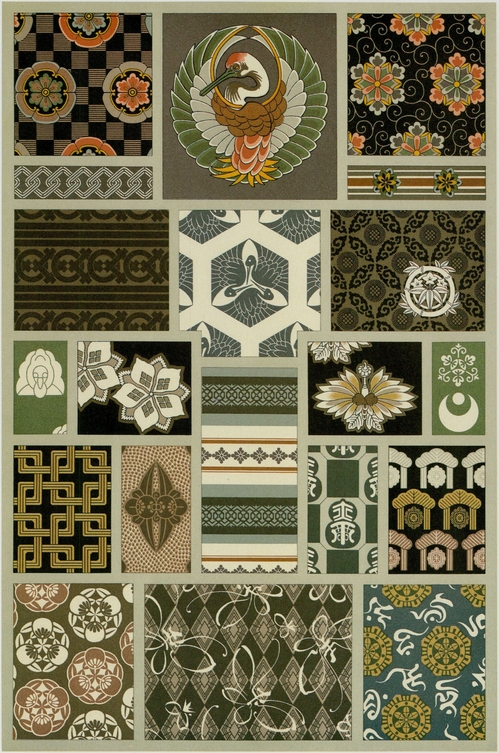
16. Japan: Motifs from textiles and wallpapers.
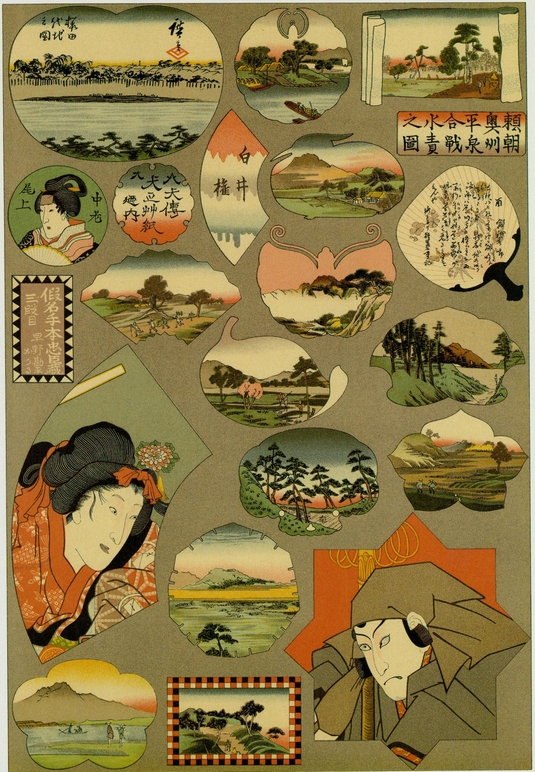
17. Japan: Ornamental cartouches.
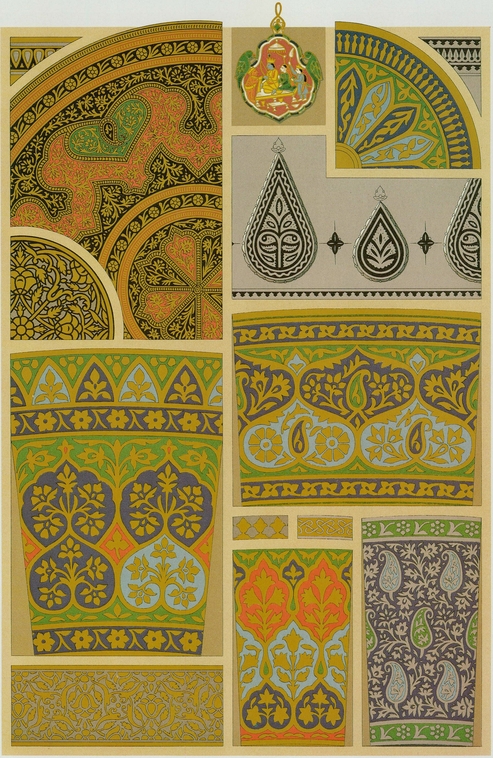
18. India: Enamels, cloisonné, niello and chased steel from Kashmir and the north.
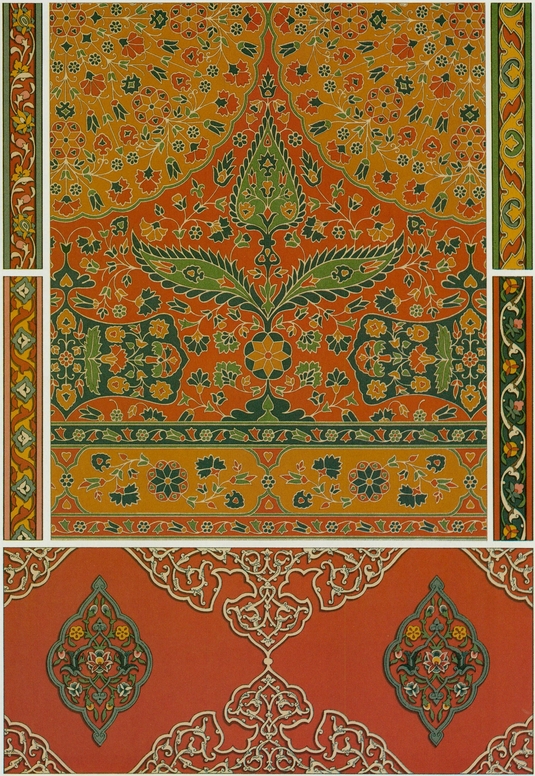
19. India: Appliquéd fabric and 16th-century painted designs.
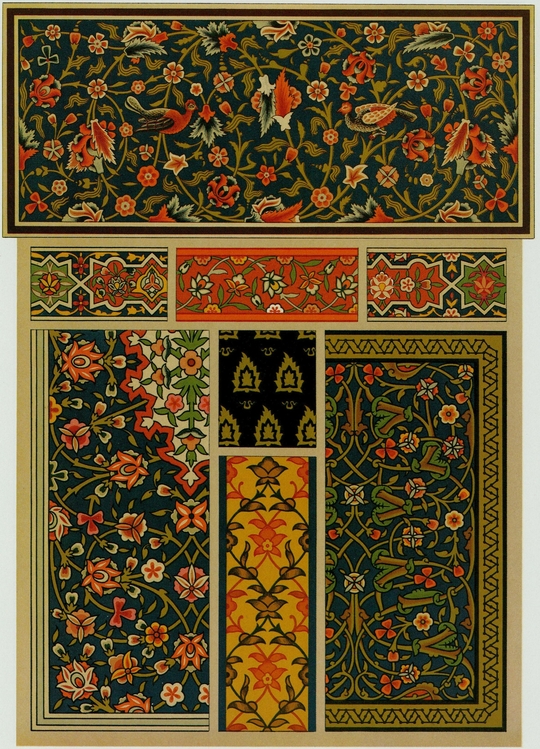
20. Mughal India: Motifs from architectural decor depicted in 16th-century paintings.
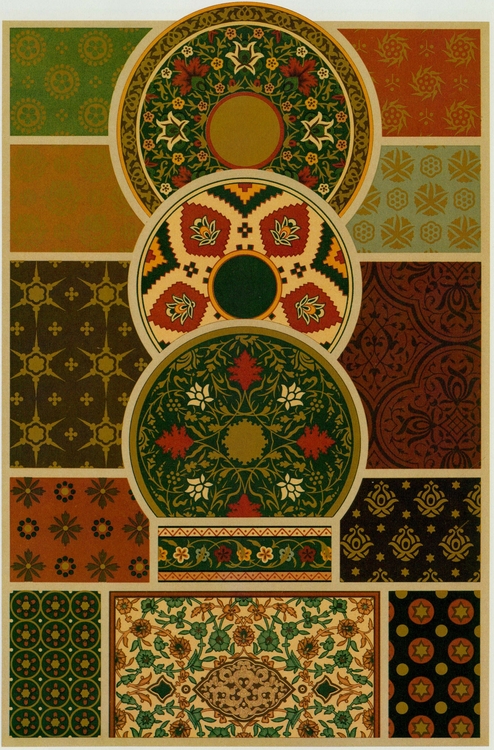
21. Mughal India: Motifs from 16th-century paintings.
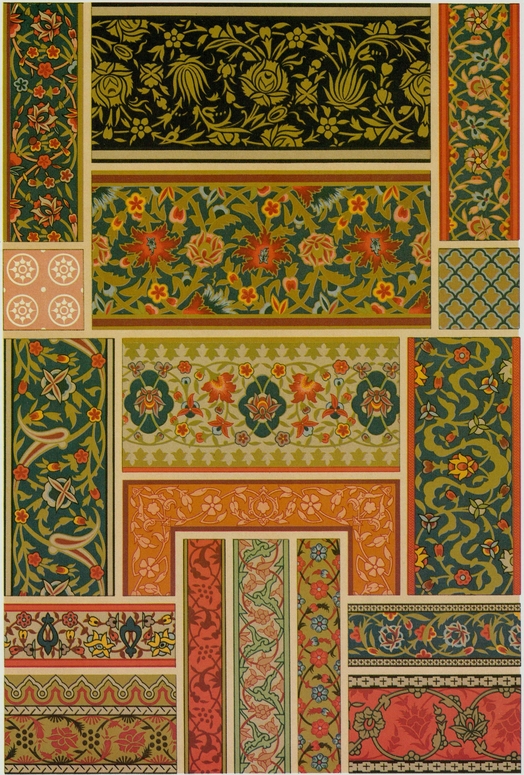
22. Mughal India: Border elements from 16th-century paintings.
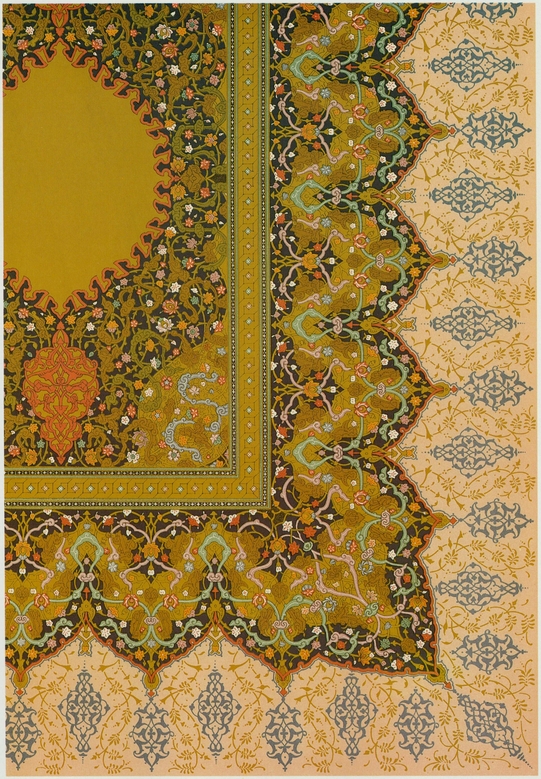
23. Mughal India: Portion of an illuminated page from a 16th-century Koran.
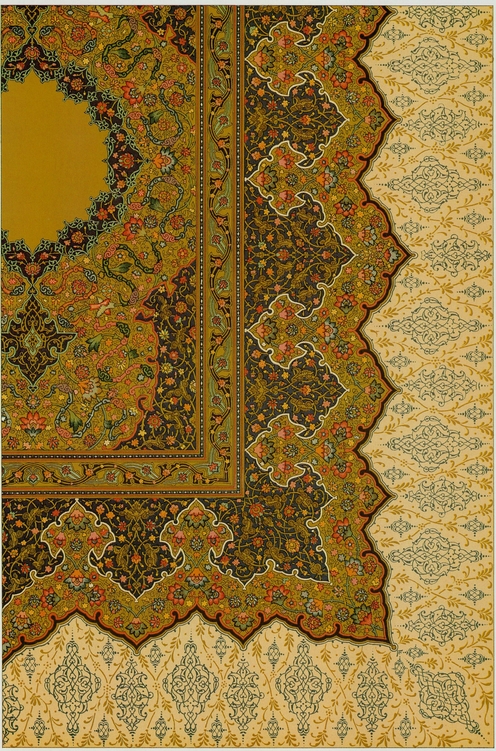
24. Mughal India: Portion of an illuminated page from a 16th-century Koran.
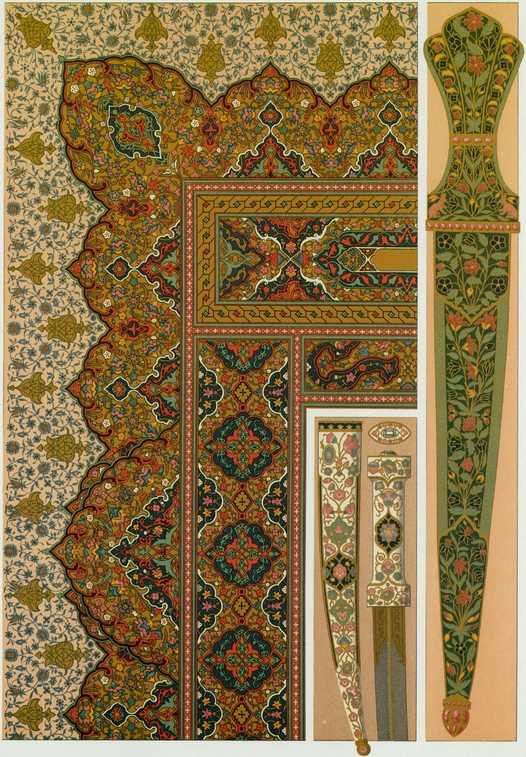
25. Persia and India: Koran decoration (Persia, 17th century) and cloisonné daggers.
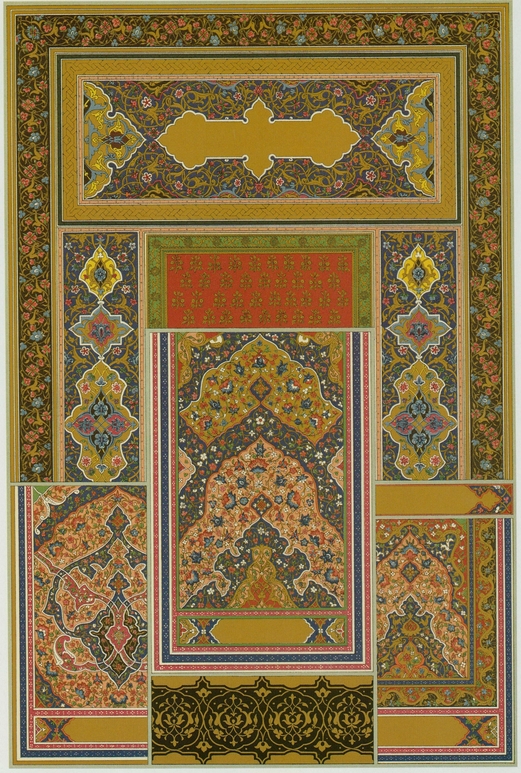
26. Mughal India: Motifs from illuminated manuscripts and niello metalwork.
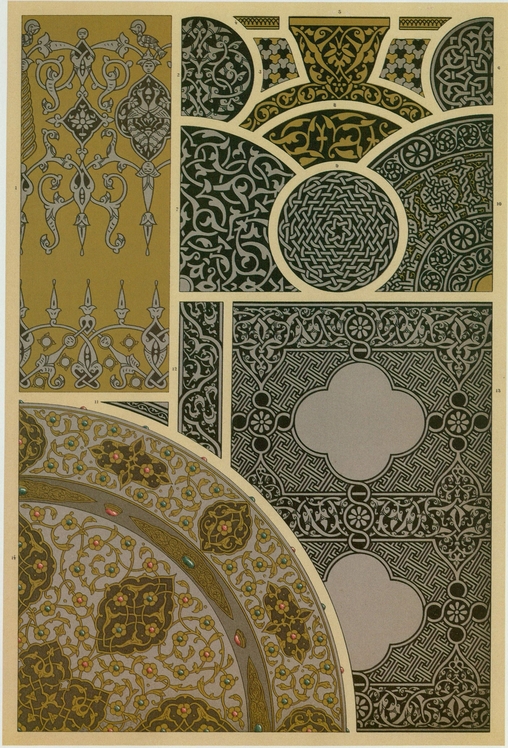
27. Persia: Designs from engraved and inlaid metal.
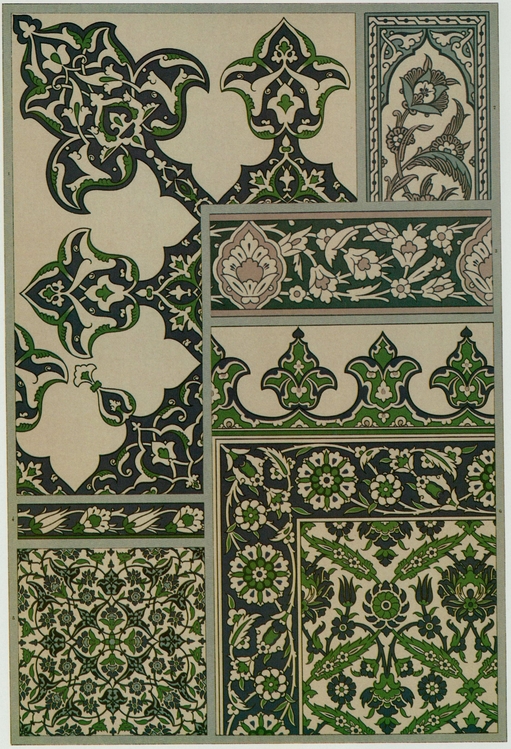
28. Persia: Designs from enameled and glazed wall tiles.
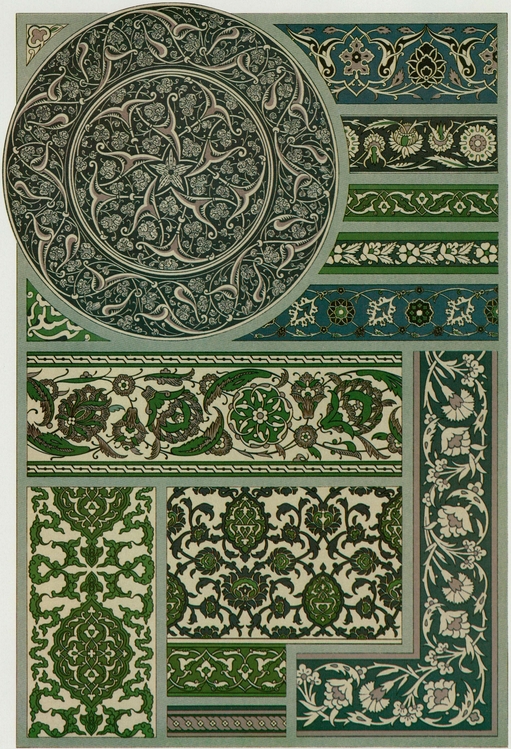
29. Persia: Designs from enameled and glazed faience ceramics.

30. Persia and Turkey: Motifs from exterior and interior faience wall cladding.
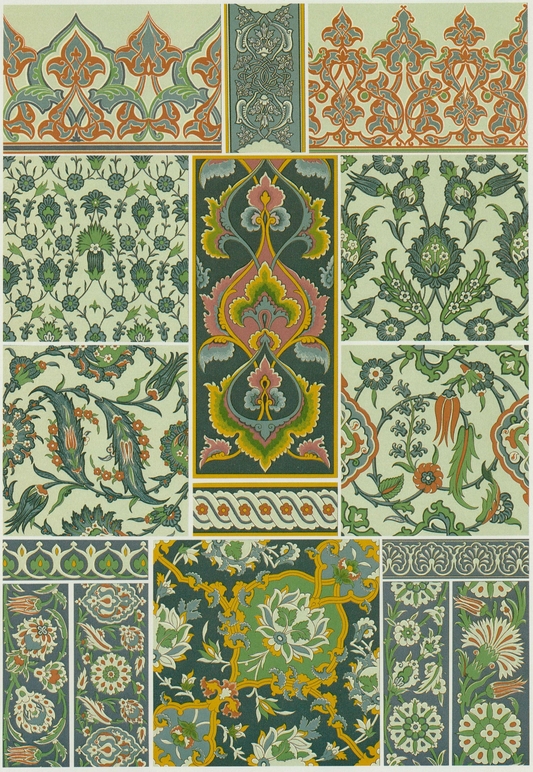
31. Persia: Motifs from enameled and glazed ceramic wall cladding.

32. Persia: Enameled and glazed faience ceramics.
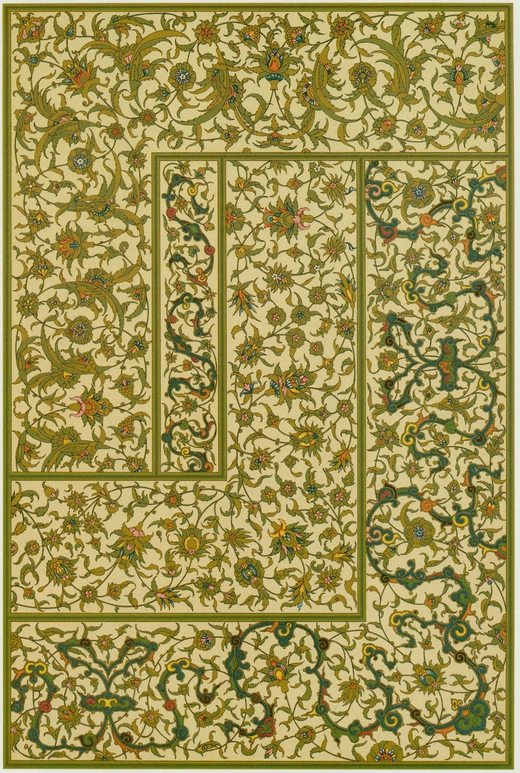
33. Persia: Motifs from margins of illuminated manuscripts.

34. Islamic: Motifs from damascened metalwork.
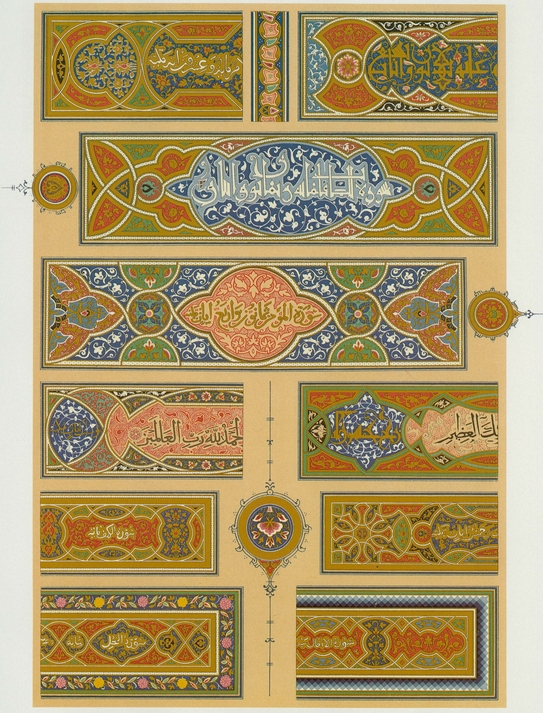
35. Islamic: Designs with lettering from an illuminated Koran, 14th or 15th century.

36. Islamic: Designs with lettering from an illuminated Koran, 14th or 15th century.
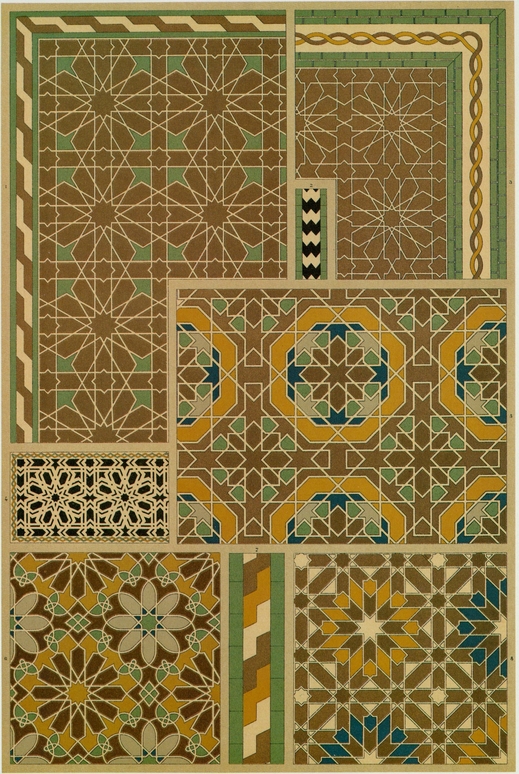
37. Islamic: Motifs from Algerian public architecture, 13th and 14th centuries.
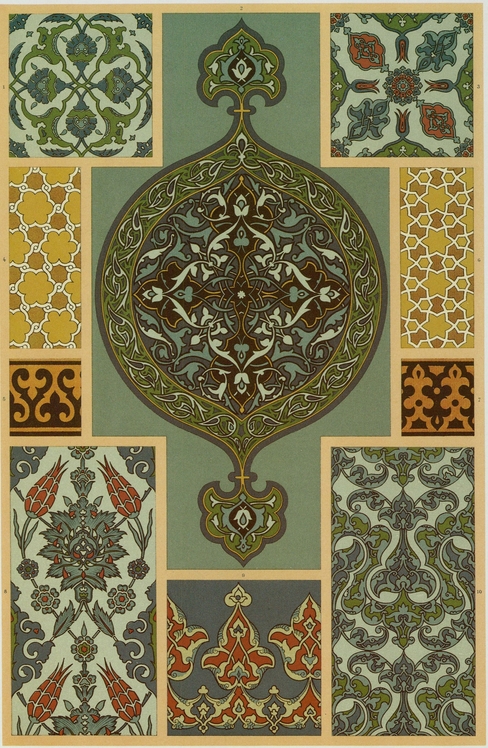
38. Turkey: Motifs from wall tiles, inlaid wood, and painted and enameled terra-cottas.
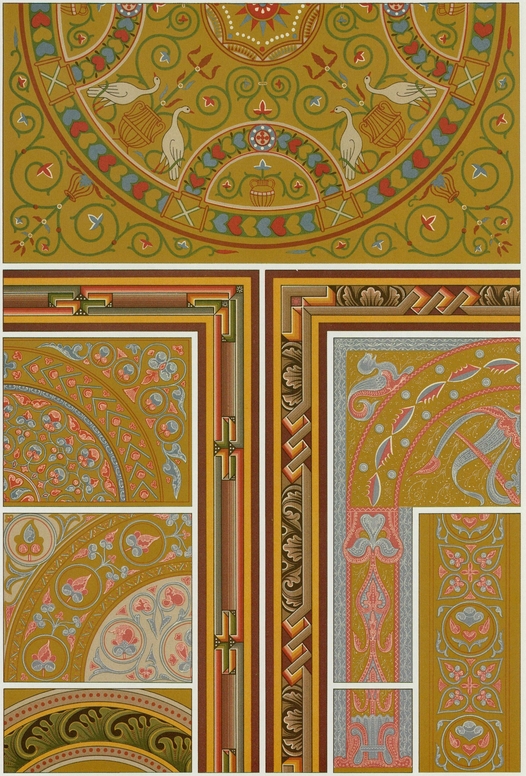
39. Byzantine and Early Medieval: motifs from architecture and manuscripts.
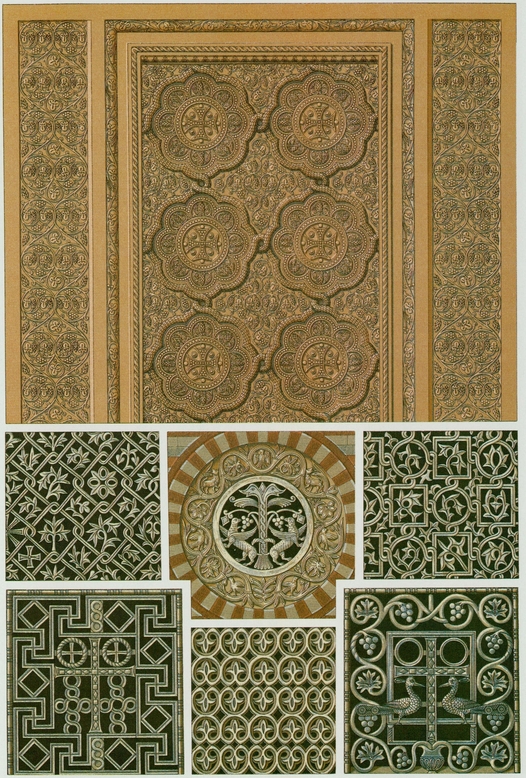
40. Byzantine: Architectural motifs, Egypt and Italy, 6th century or earlier.
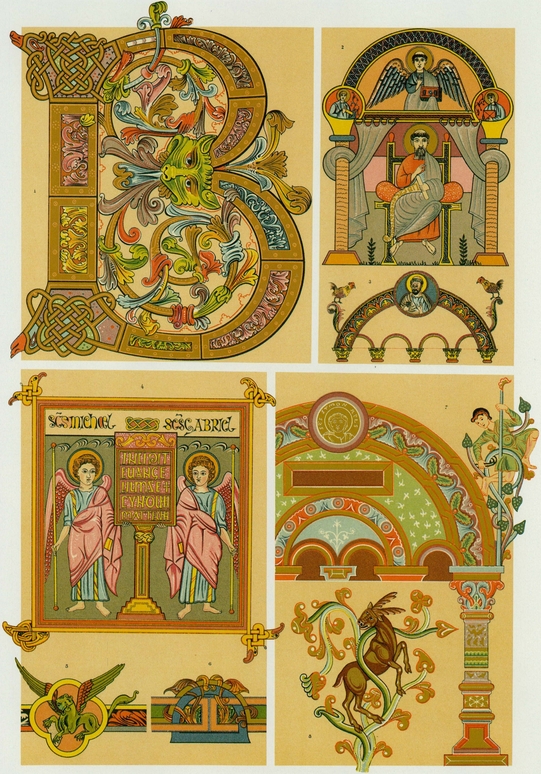
41. Medieval: “Celtic” ornament from various sources, 6th—11th centuries.
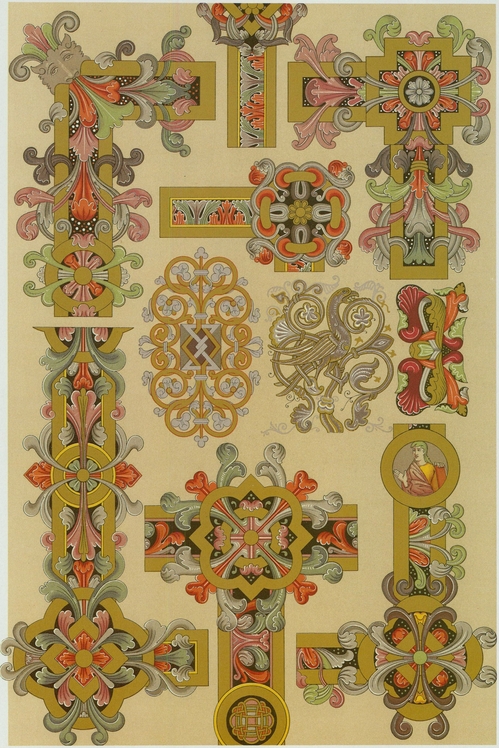
42. Medieval: Frames and ornaments from illuminated manuscripts, Western Europe.
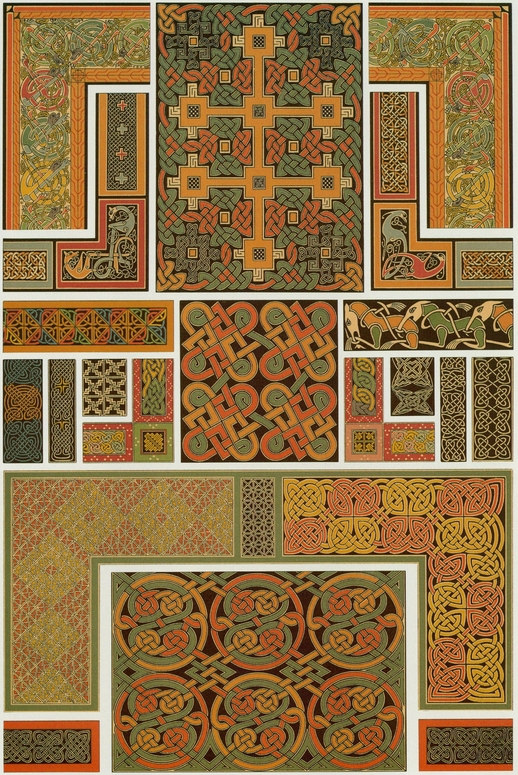
43. Medieval: “Celtic” interlace ornament from British and Scandinavian sources.
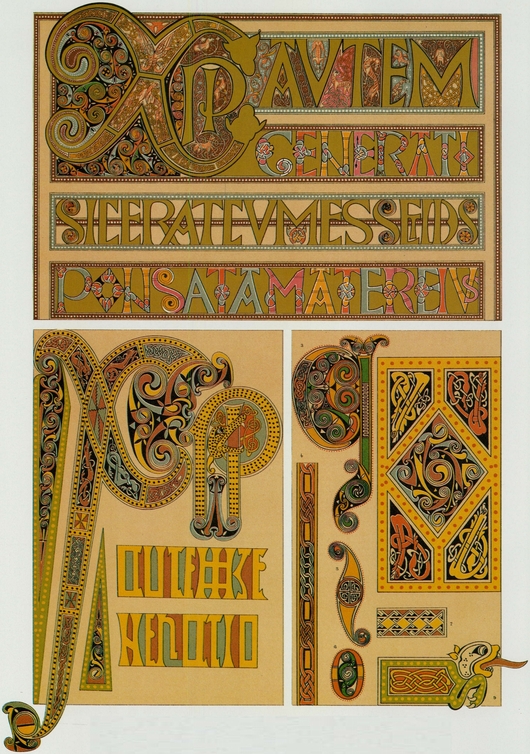
44. Medieval: “Celtic” ornament from illuminated manuscripts, 7th-9th centuries.
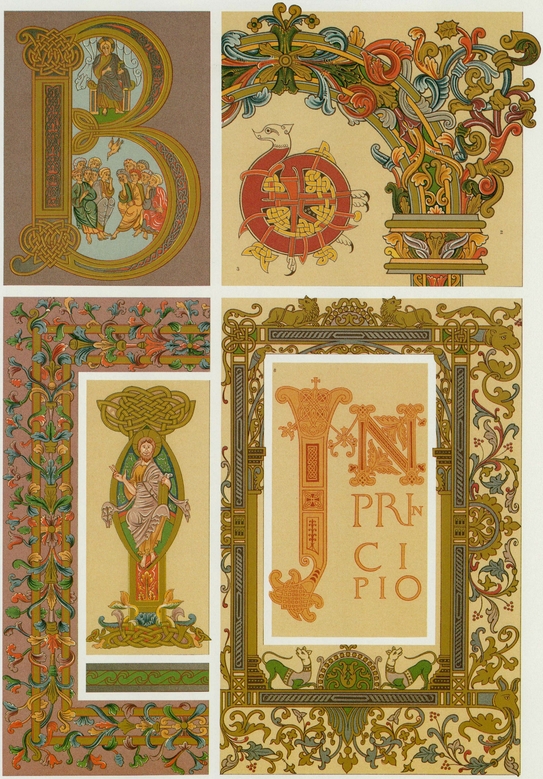
45. Medieval: Manuscript decorations, Anglo-Saxon and Frankish, 8th—10th centuries.
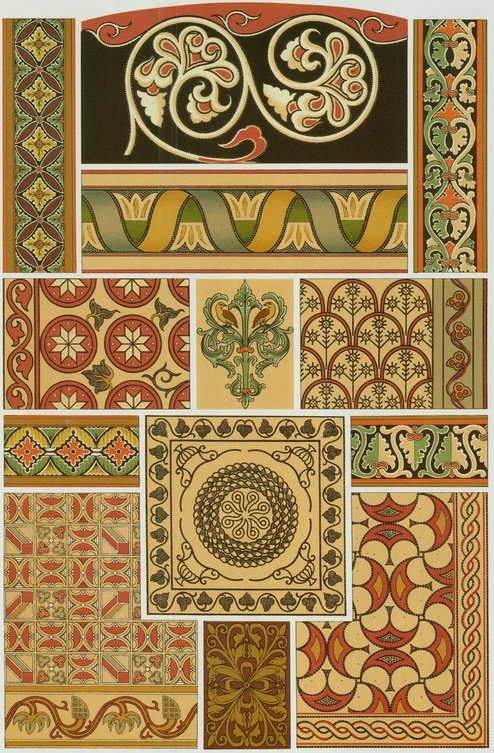
46. Medieval: Mosaic and painted ornament, France, late Roman to Romanesque periods.
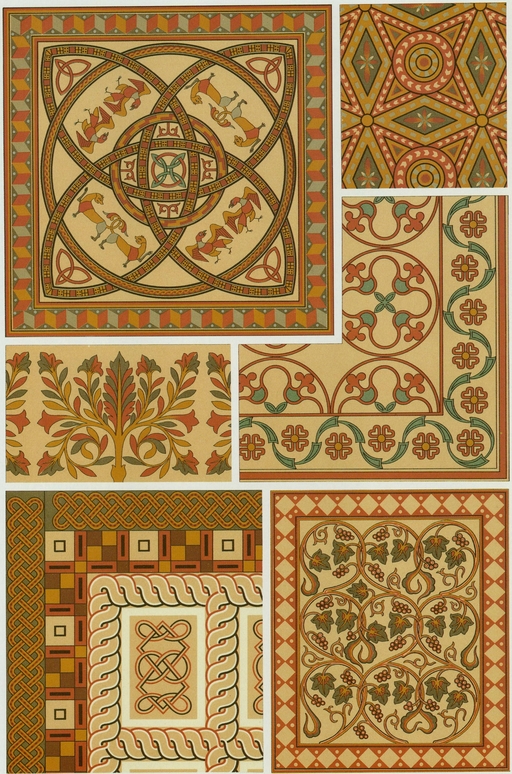
47. Medieval: Mosaic designs, France, late Roman to Romanesque periods.
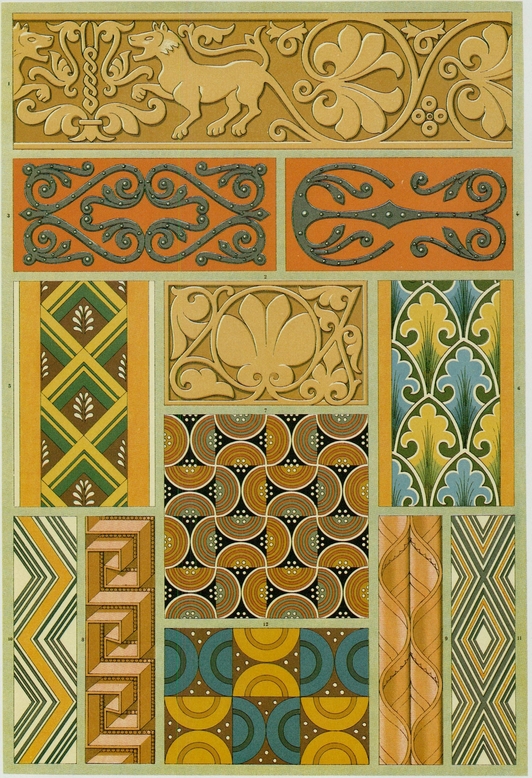
48. Medieval: Bas-reliefs, ironwork and painting, France, 11th—14th centuries.
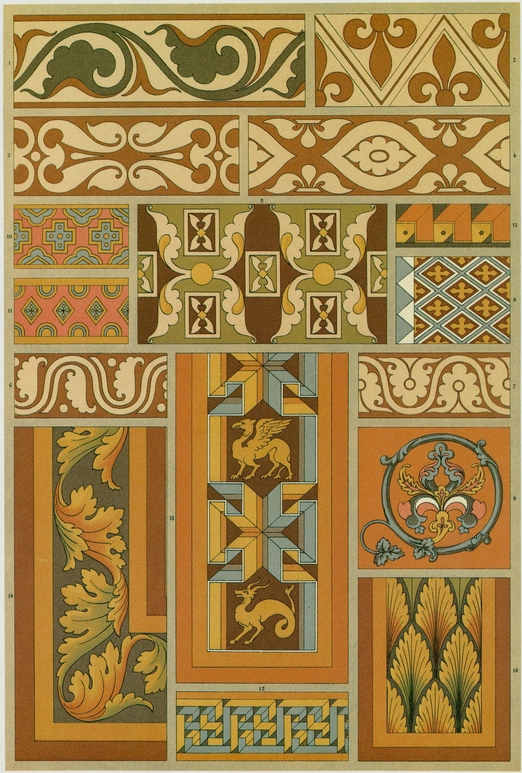
49. Medieval: Mural motifs from ecclesiastical buildings, France, 11th—14th centuries.
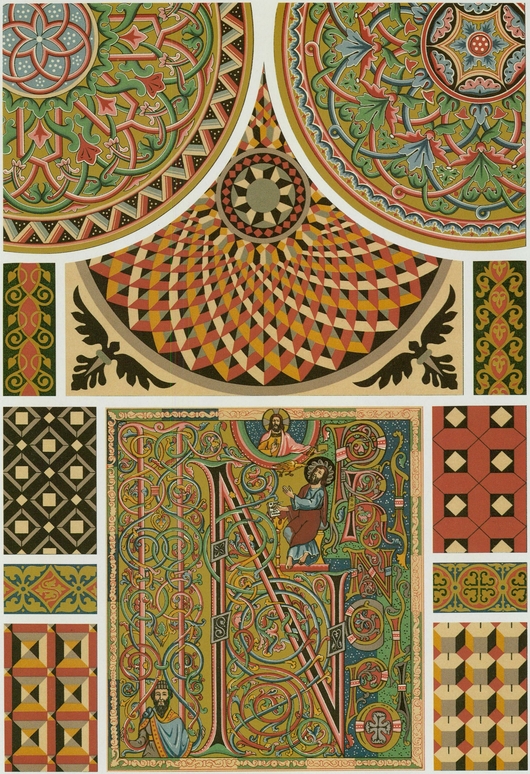
50. Medieval: Mosaics and glass paintings, St. Mark’s, Venice; manuscript initial.
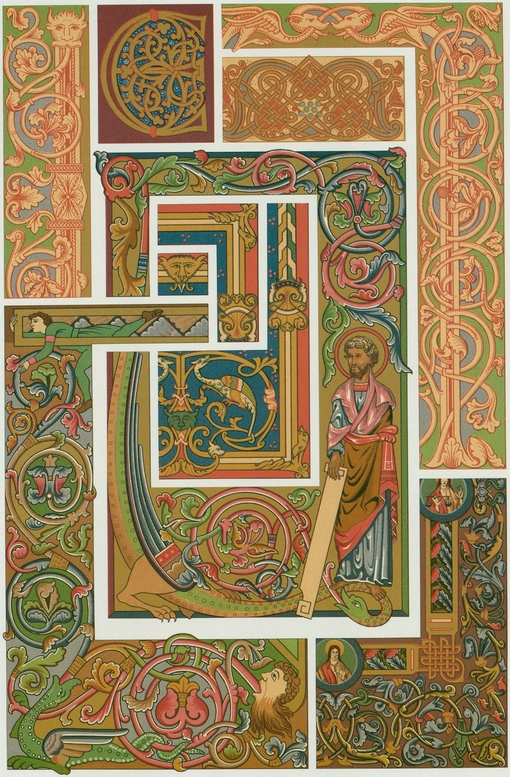
51. Medieval: Manuscript decorations, France and Germany, 8th—13th centuries.
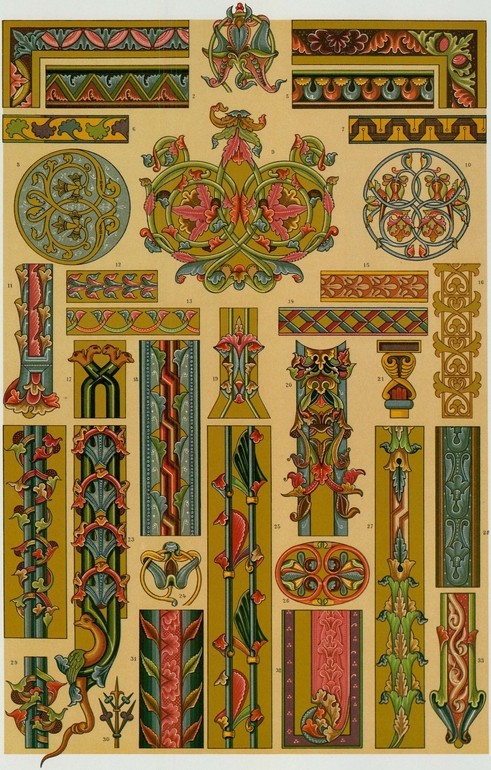
52. Medieval: Manuscript decorations, 8th—12th centuries.
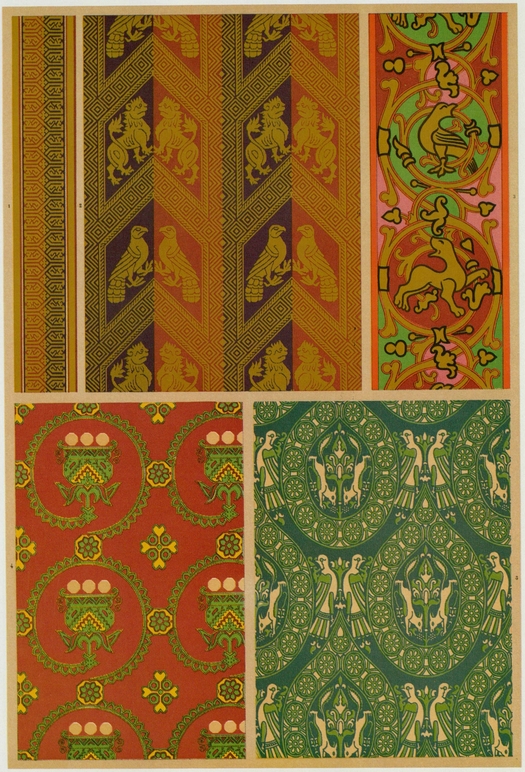
53. Medieval: Designs from textiles imported into Europe from the Near East.

54. Early Medieval: Mosaic patterns from Italian churches.
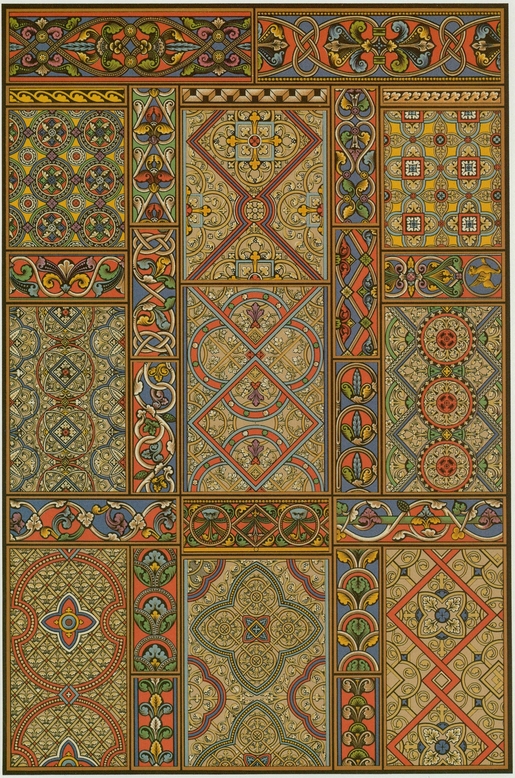
55. Medieval: Stained glass from French and English cathedrals, 12th—14th centuries.
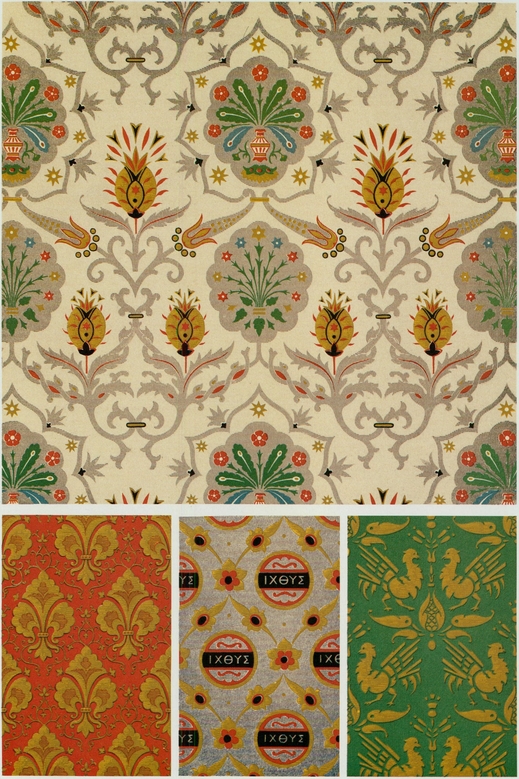
56. Medieval: Brocatelles of Near Eastern style depicted in Italian paintings.
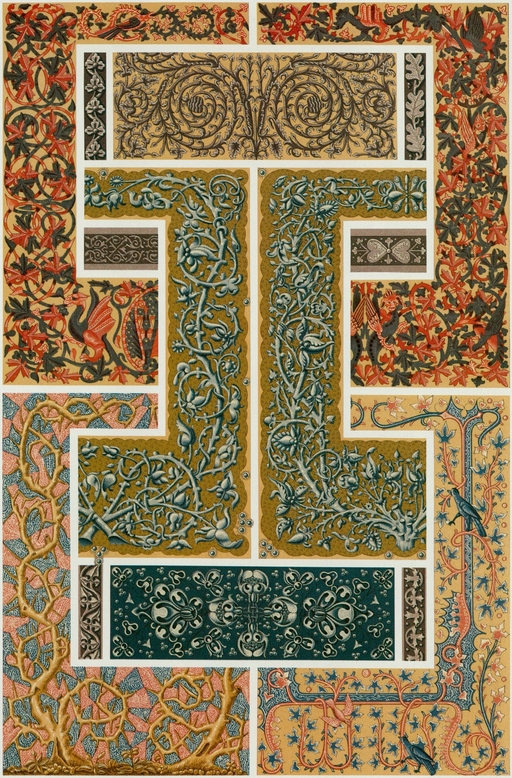
57. Medieval: Plant motifs from architecture and manuscripts.
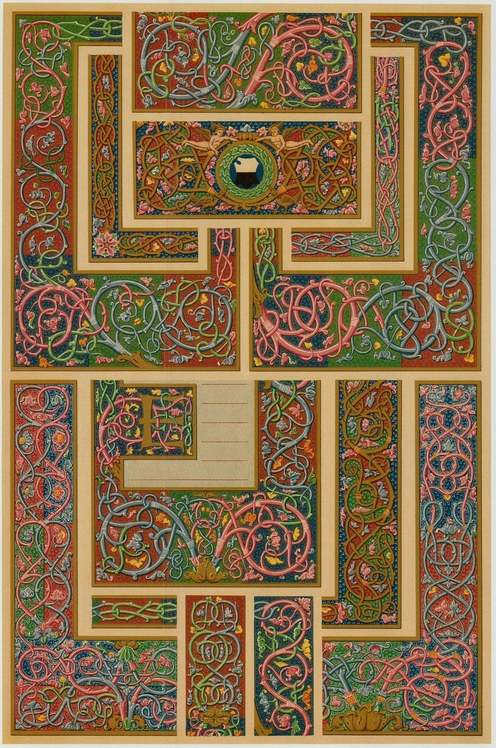
58. Medieval: Enamelwork on glass as depicted in Italian manuscripts.
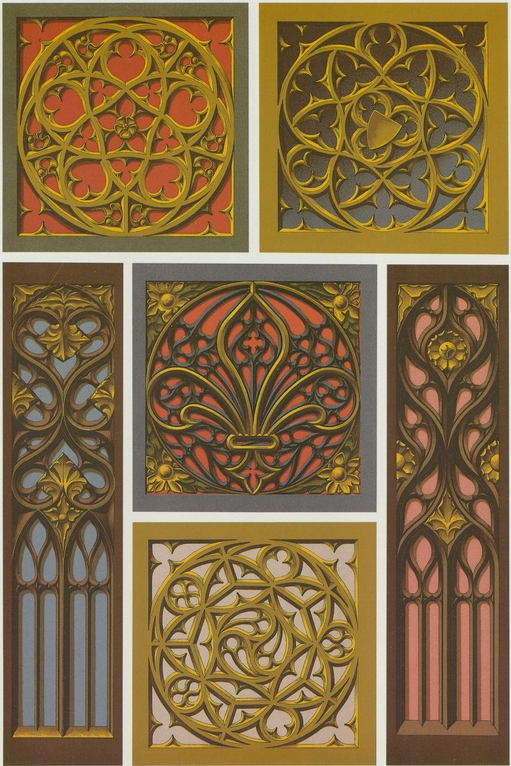
59. Medieval: Painted and gilt woodwork, 15th century.
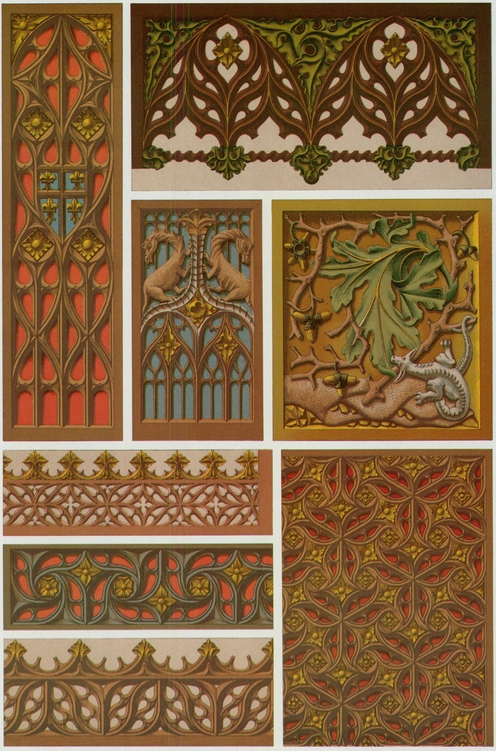
60. Medieval: Painted and gilt woodwork, 15th century.
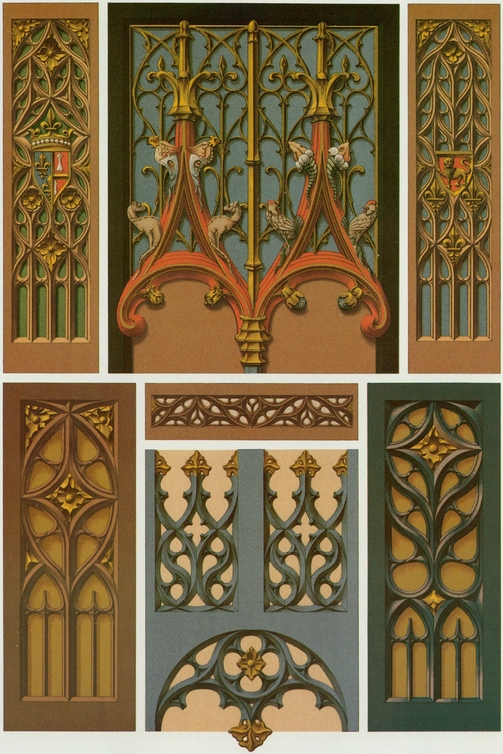
61. Medieval: Painted and gilt woodwork, 15th century.
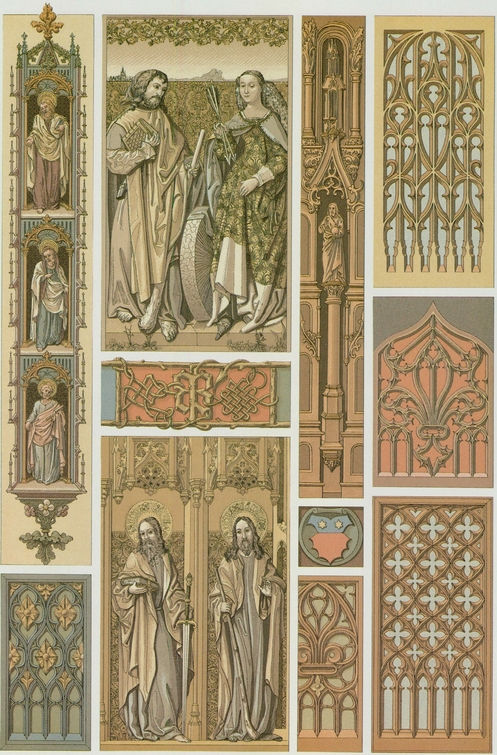
62. Medieval: Motifs from woodwork, manuscripts and votive paintings.
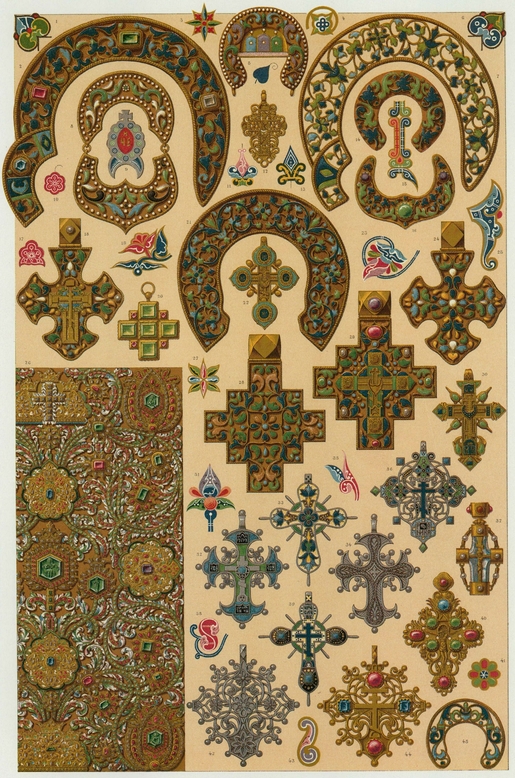
63. Russia: Gold and jewelry, 16th and 17th centuries, some based on painted depictions.
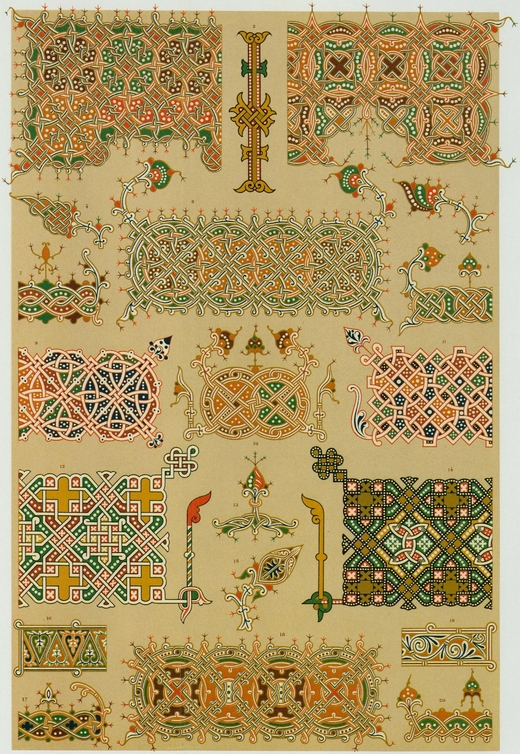
64. Russia: Interlace and other ornaments from 16th-century manuscripts.
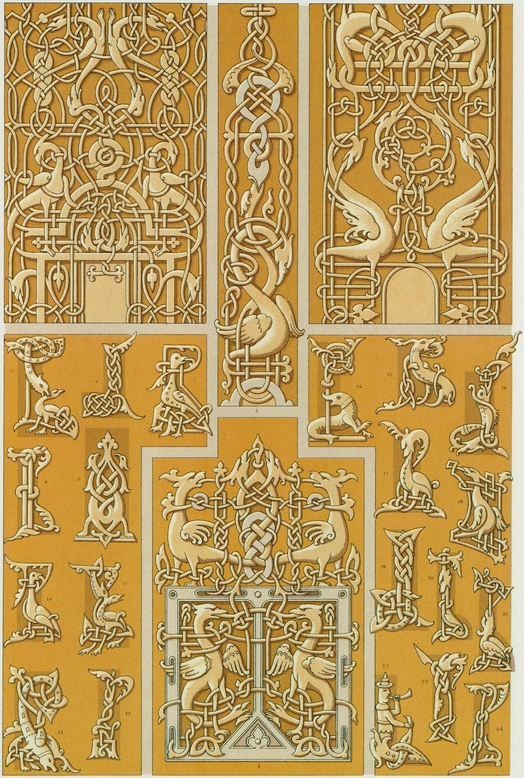
65. Russia: Ornaments from 14th-century manuscripts.
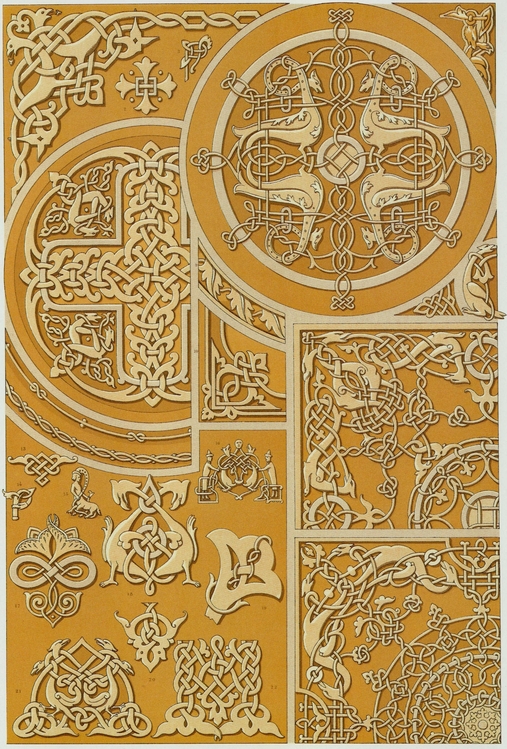
66. Russia: Motifs from metalwork and manuscripts, 12th—15th centuries.

67. Russia: Motifs from engraved and chased metal.
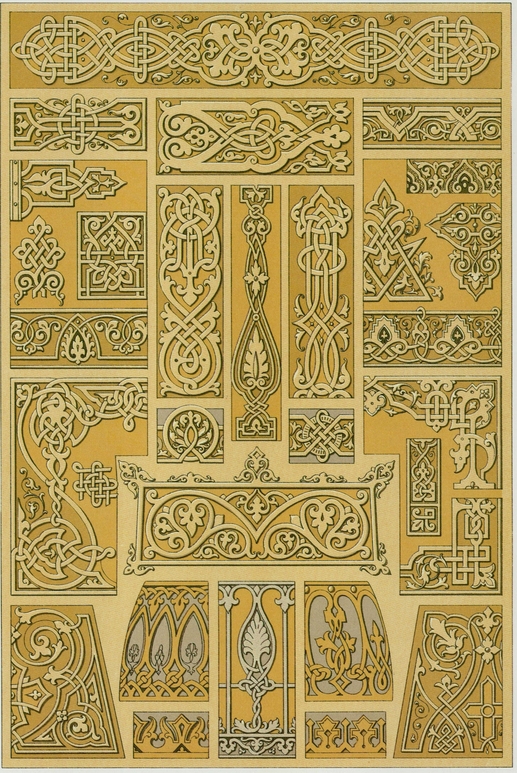
68. Russia: Motifs from metalwork and manuscripts.
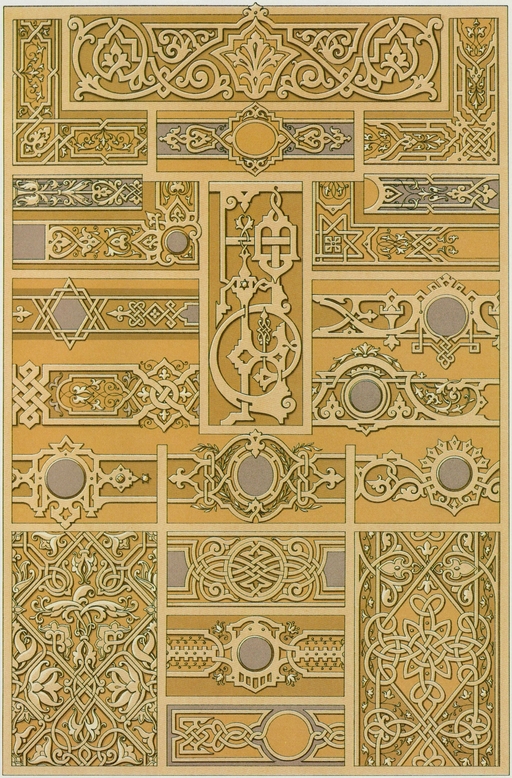
69. Russia: Motifs from metalwork.
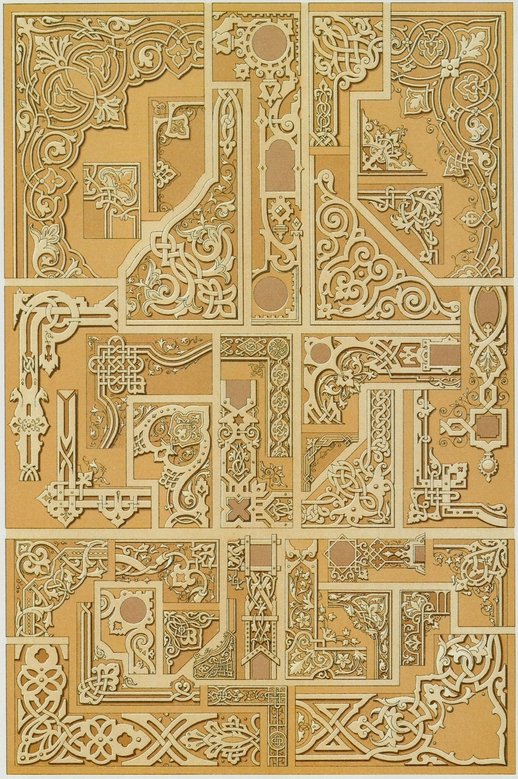
70. Russia: Corner motifs from metalwork designs.
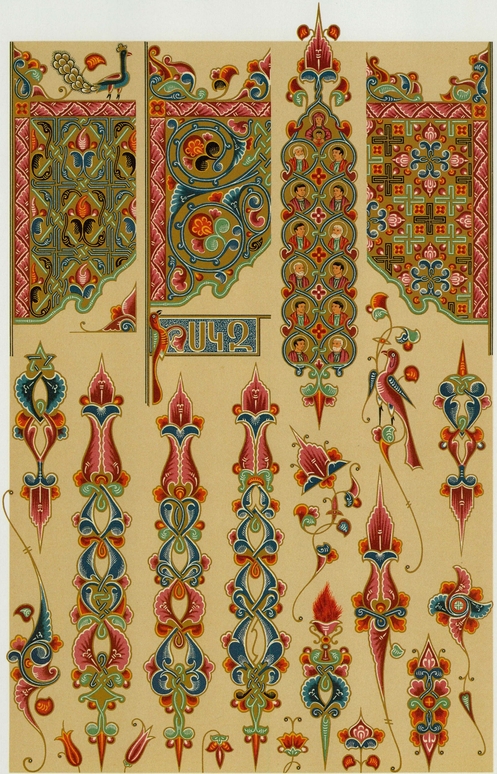
71. Armenia: Motifs From an illuminated Gospel manuscript, 16th century.

72. Medieval: Jewelry designs from illuminated manuscripts, 15th century.

73. Renaissance: Enameled jewelry, 15th and 16th centuries, from Italian manuscripts.
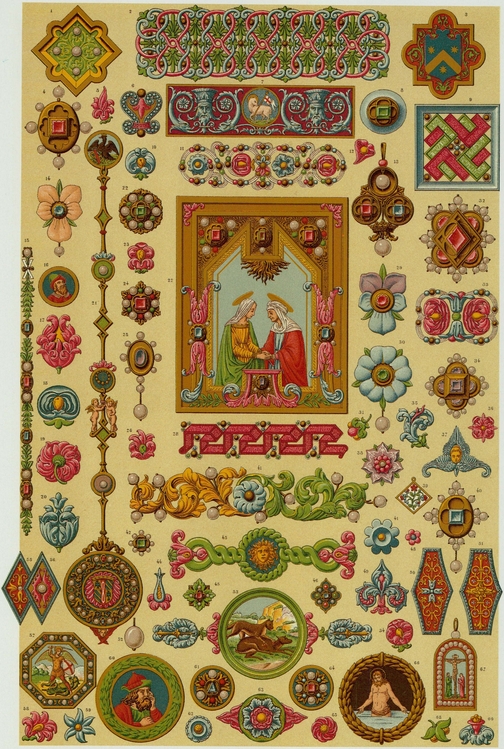
74. Renaissance: Enameled jewelry, 15th and 16th centuries, from Italian manuscripts.
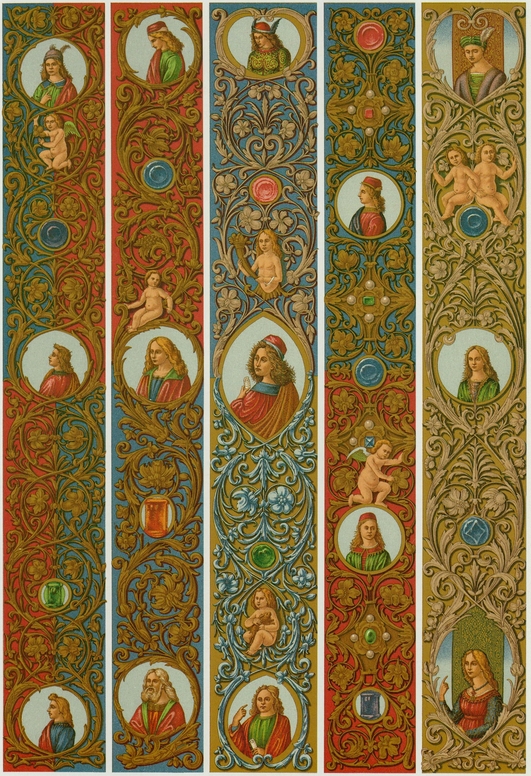
75. Renaissance: Borders from a Florentine manuscript by Attavante (1452—ca. 1520).
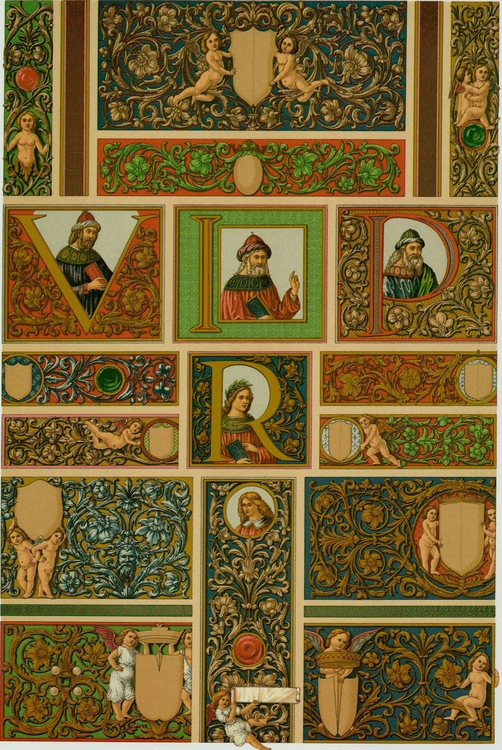
76. Renaissance: Panels and borders from a Florentine manuscript by Attavante.

77. Renaissance: Initials and ornaments from Florentine manuscripts, 16th century.

78. Renaissance: Margin decorations from manuscripts, 15th and 16th centuries.
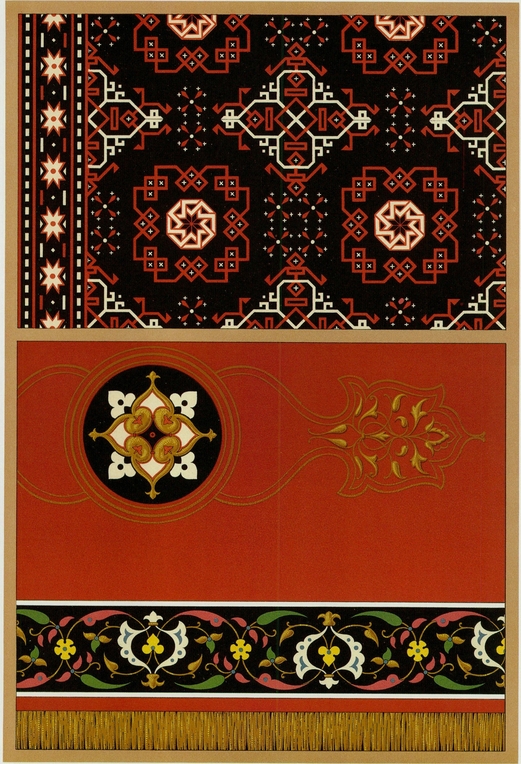
79. Renaissance: Carpet designs of Near Eastern style from 15th-century paintings.
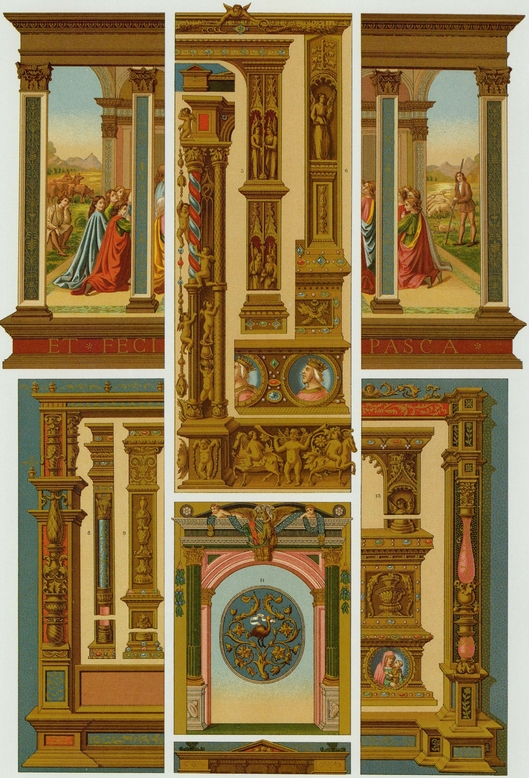
80. Renaissance: Architectural and metalwork motifs from Italian manuscripts.
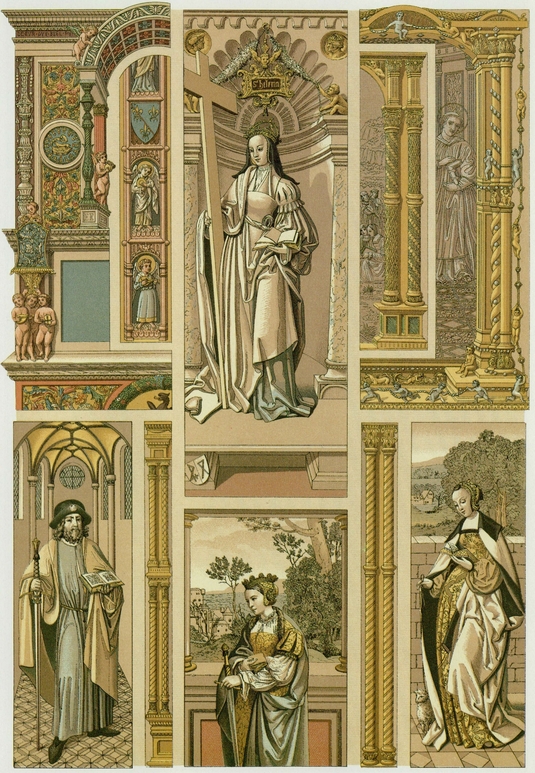
81. Renaissance: Architectural and figural motifs from paintings and manuscripts.
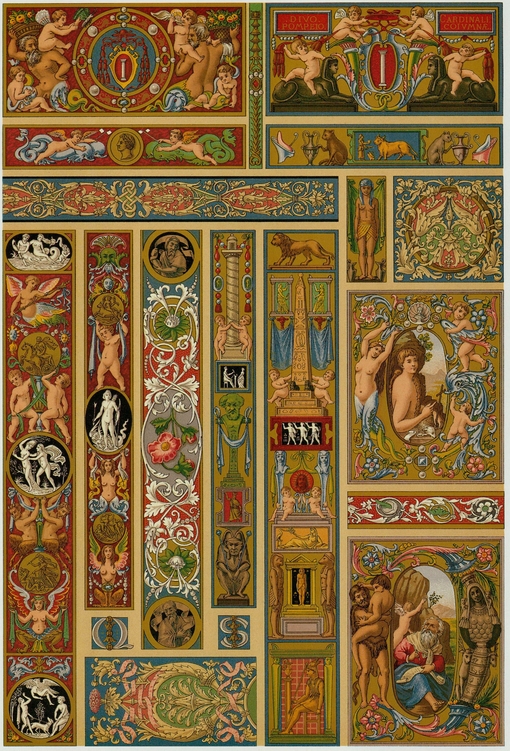
82. Renaissance: Ornaments from Italian manuscripts, 16th and 17th centuries.
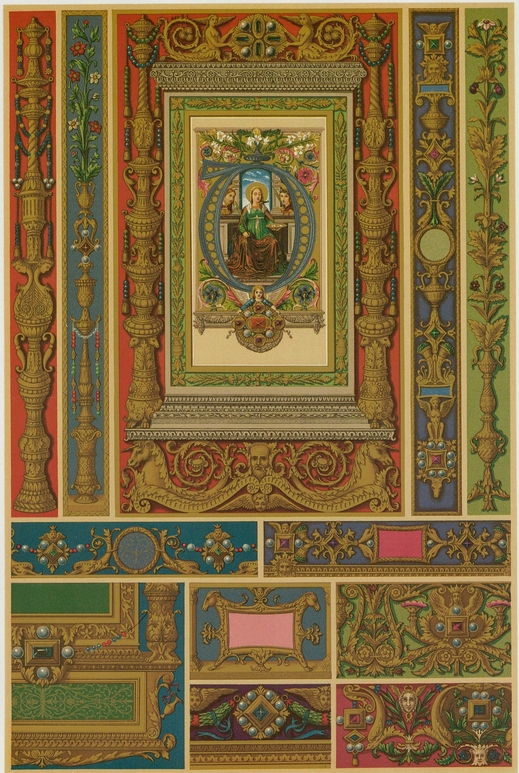
83. Renaissance: Jewelry designs from Italian manuscripts, 15th and 16th centuries.
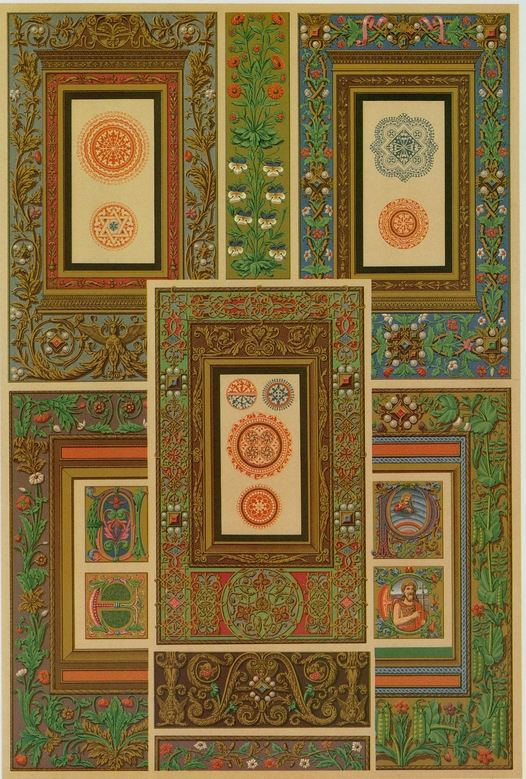
84. Renaissance: From Italian and French manuscripts, 15th and 16th centuries.
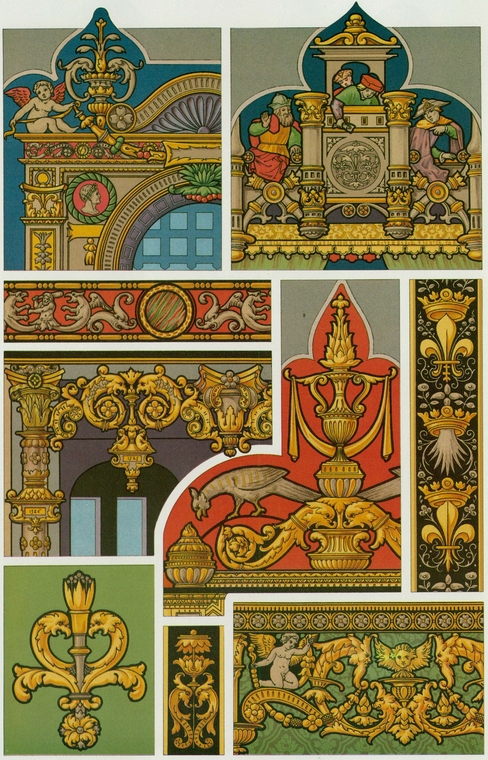
85. Renaissance: Architectural motifs from stained glass, France, 16th century.
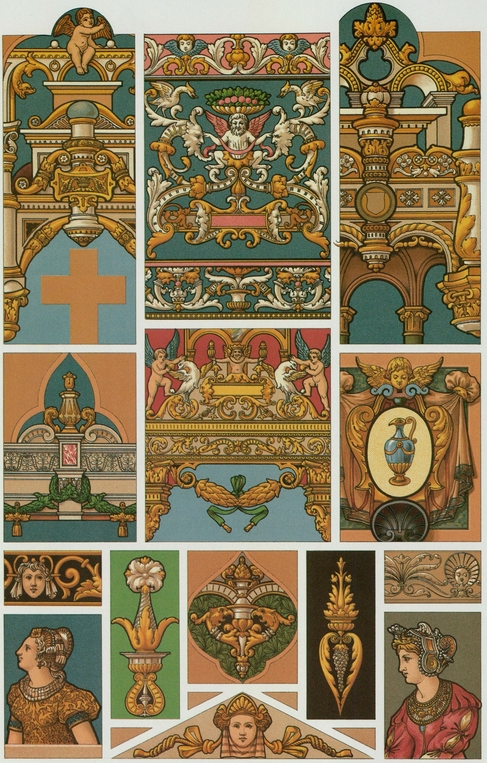
86. Renaissance: Sculptural and pictorial motifs from stained glass, France, 16th century.

87. Renaissance: From stained glass, tapestries and sculpture, France, 16th century.
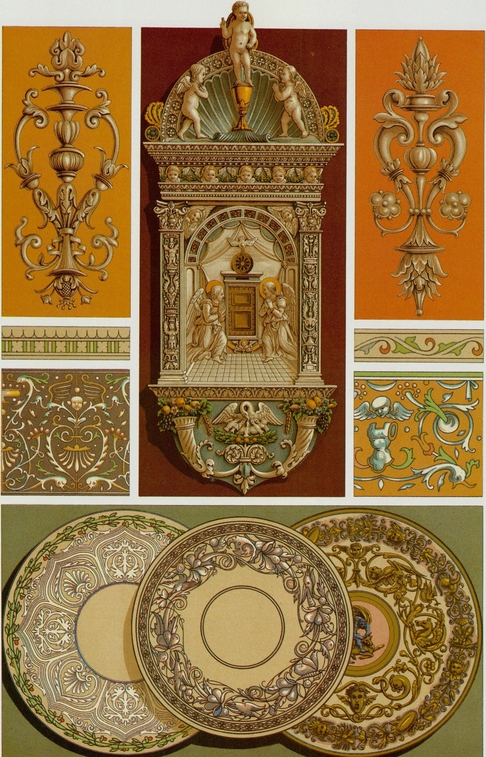
88. Renaissance: Ceramics and stained glass, France and Italy, 15th and 16th centuries.
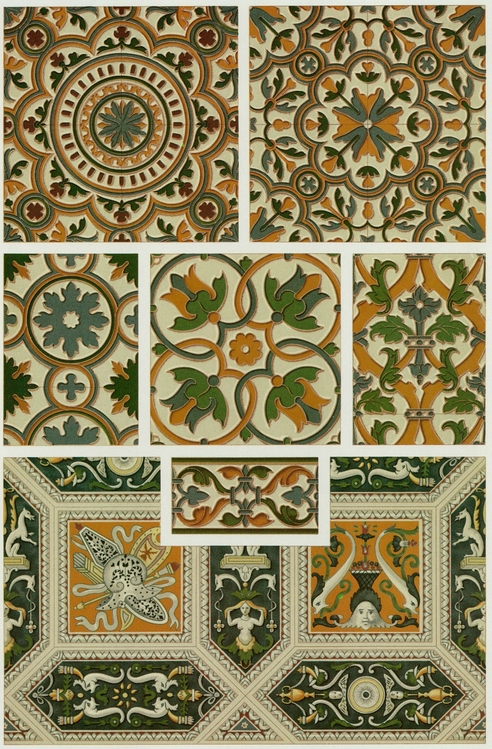
89. Renaissance: Glazed paving and wall tiles, Spanish and Italian, 16th century.
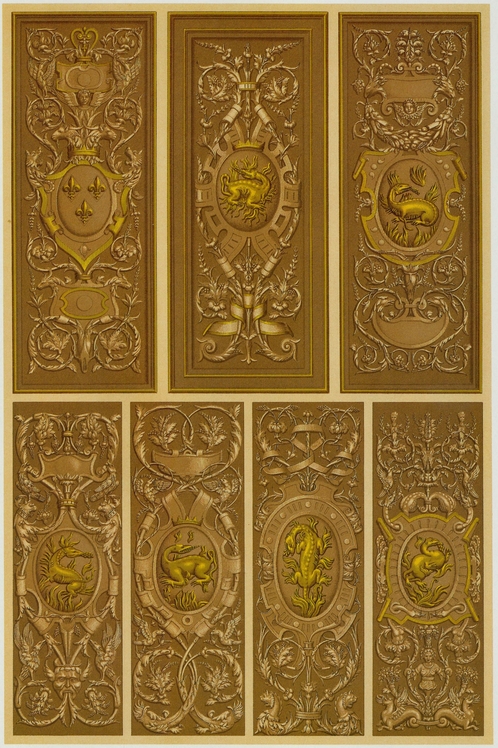
90. Renaissance: Panels from the palace of Fontainebleau, 16th century.
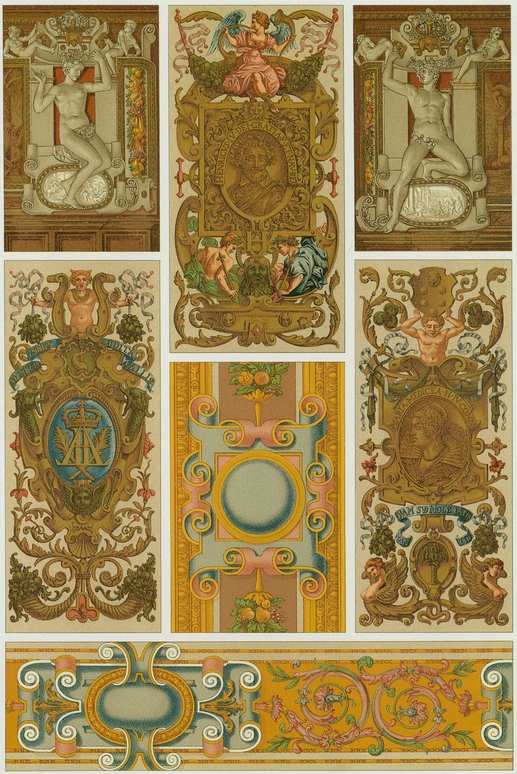
91. 16th and 17th Centuries: Cartouches from sculpture, painting and textiles, France.
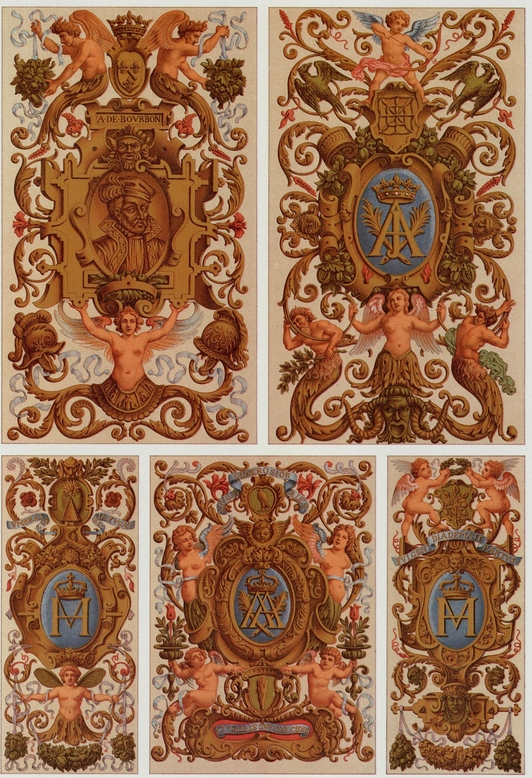
92. 17th Century: Decorative paintings from the palace of Fontainebleau.
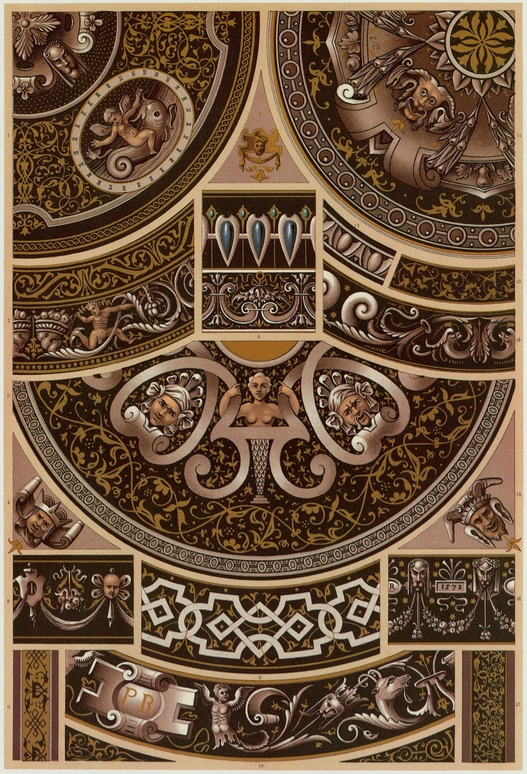
93. Renaissance : Motifs from Limoges enamels, 16th century.
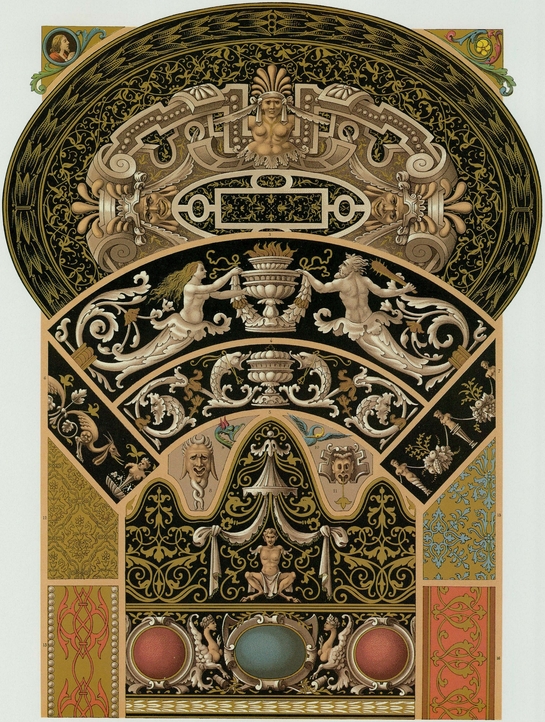
94. Renaissance: From Limoges enamels, textiles and manuscripts, 15th and 16th centuries.
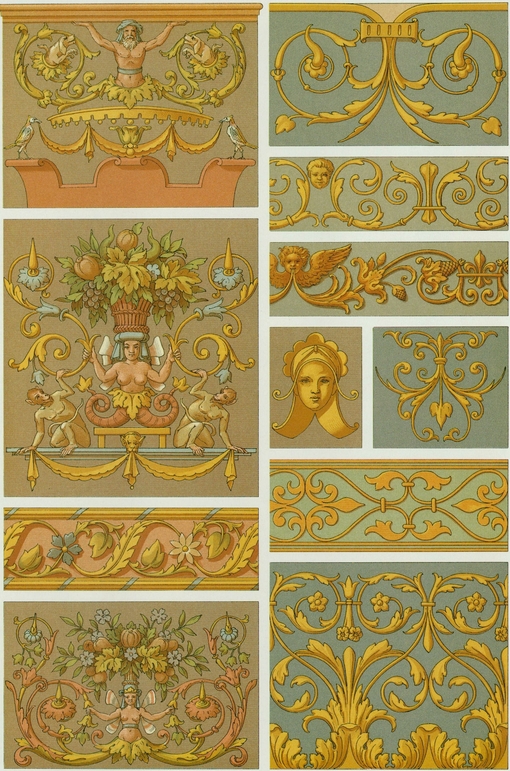
95. Renaissance: Ornament from Flemish tapestries, 16th century.
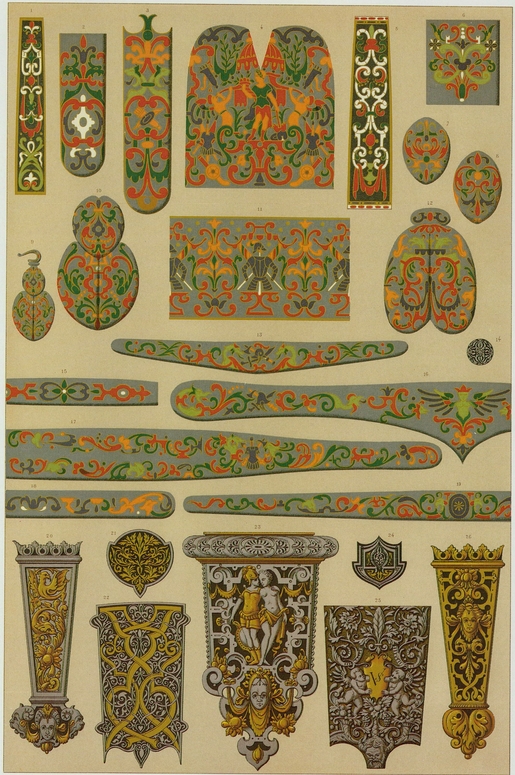
96. Renaissance: Metalwork on swords, daggers and their sheaths, 16th century.
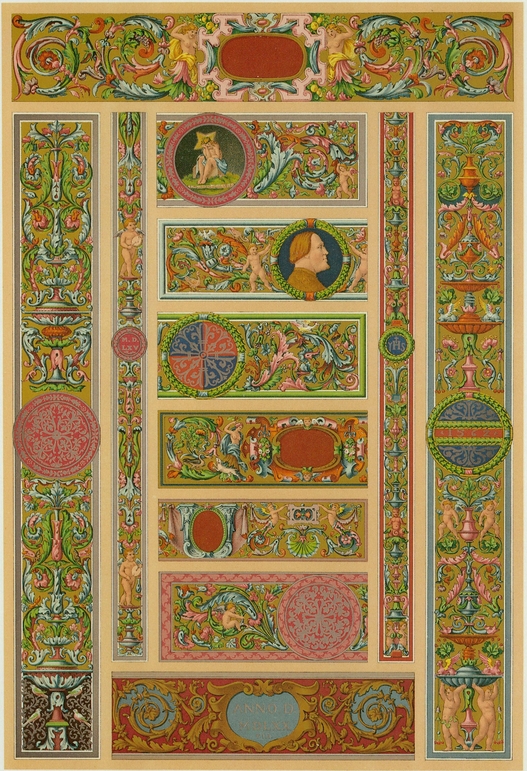
97. Renaissance: Italian manuscript decorations, second half of the 16th century.
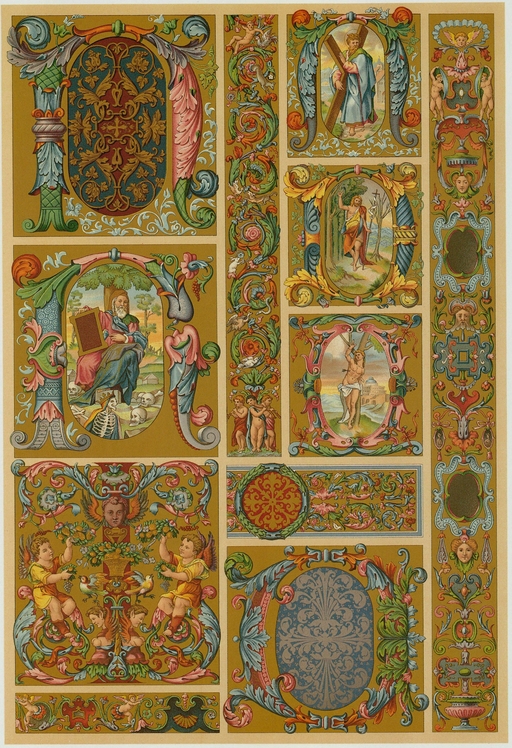
98. Renaissance: Italian manuscript decorations, second half of the 16th century.

99. Renaissance: Carved-wood motifs from a 16th-century Italian manuscript.
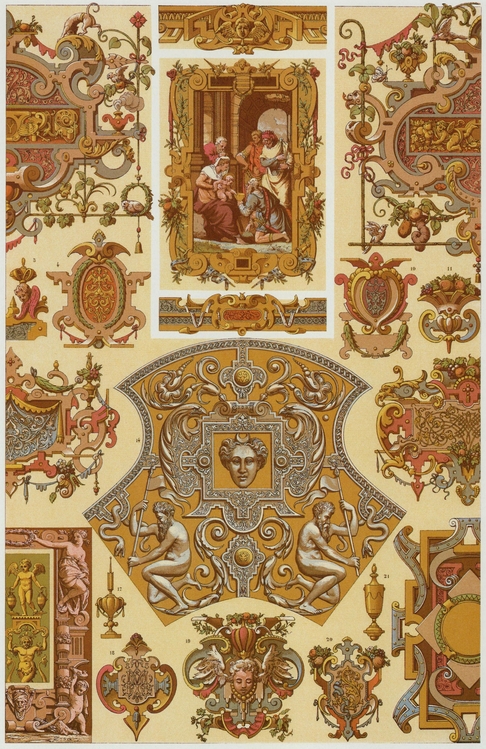
100. Renaissance: Frames and ornaments based on woodwork, 16th century.

101. Renaissance: Lace motifs from a volume published in Liege in 1597.
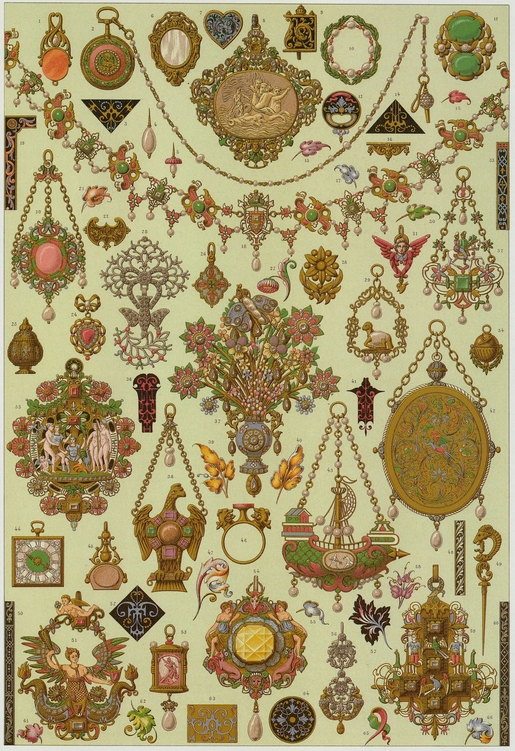
102. 15th—18th Centuries: Jewelry.

103. 17th Century: English tapestry said to have been given by James II to Louis XIV.
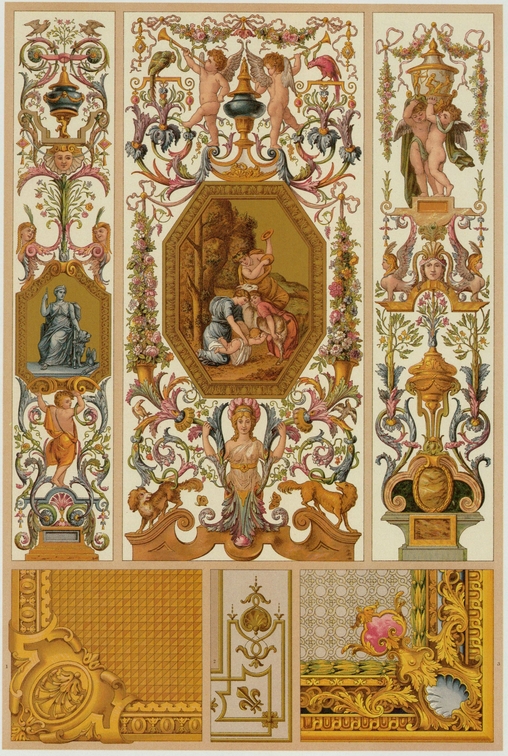
104. 17th Century: Interior decor (painting, tapestry, woodwork), France.
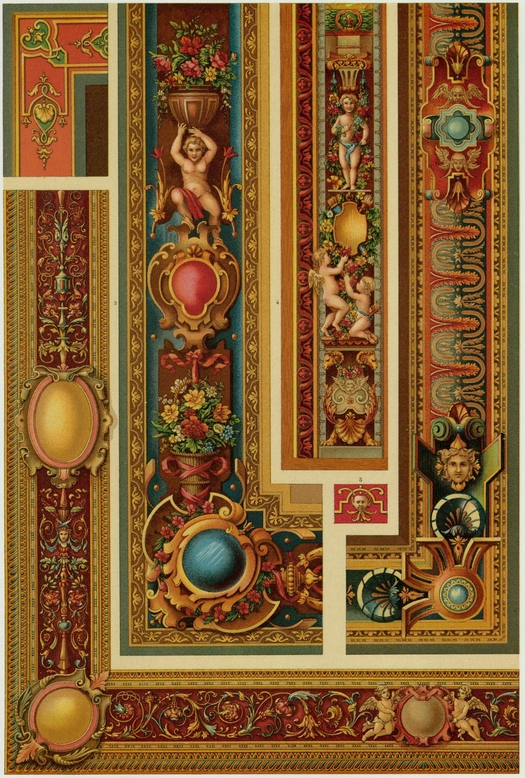
105. 16th and 17th Centuries: Tapestry borders and corners, England and France.
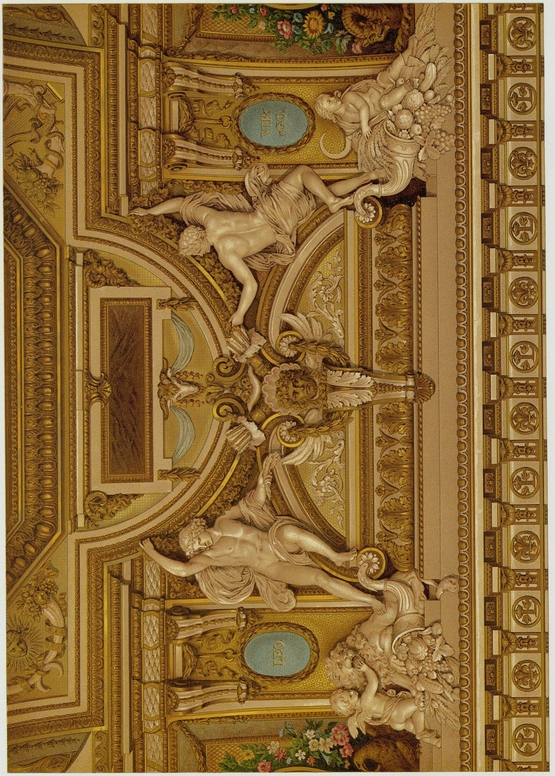
106. 17th Century: From a carved and painted ceiling vault by Charles Le Brun in the Louvre.
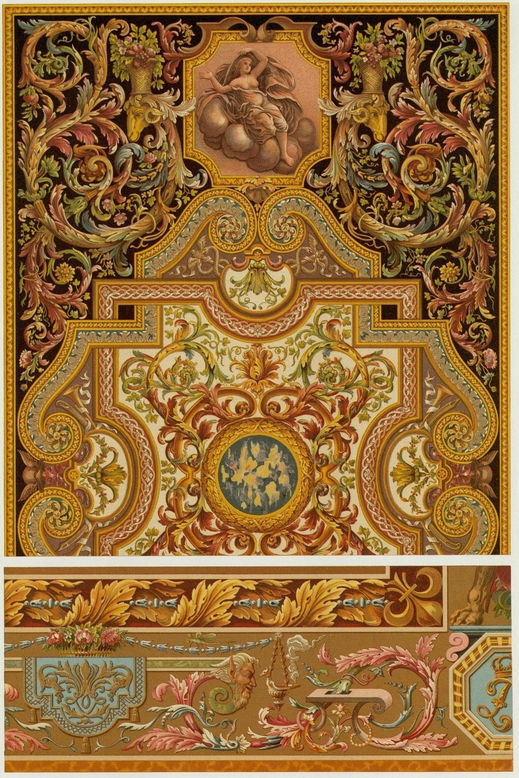
107. 17th Century: Details from a carpet and a wall hanging, France.
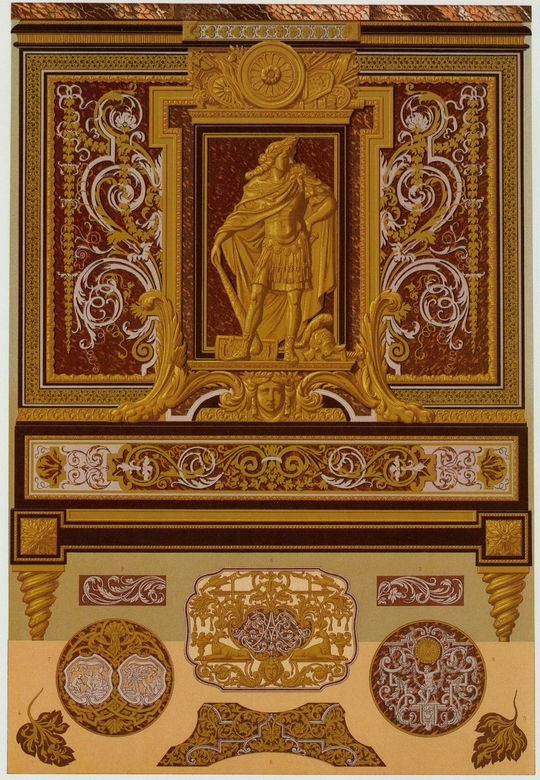
108. 17th Century: Metallic inlay from furniture, France.
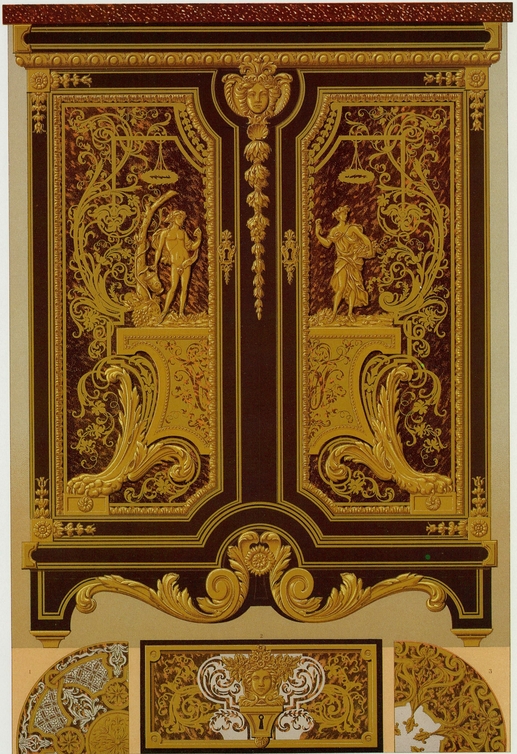
109. 17th Century: Metallic inlay from furniture, France.
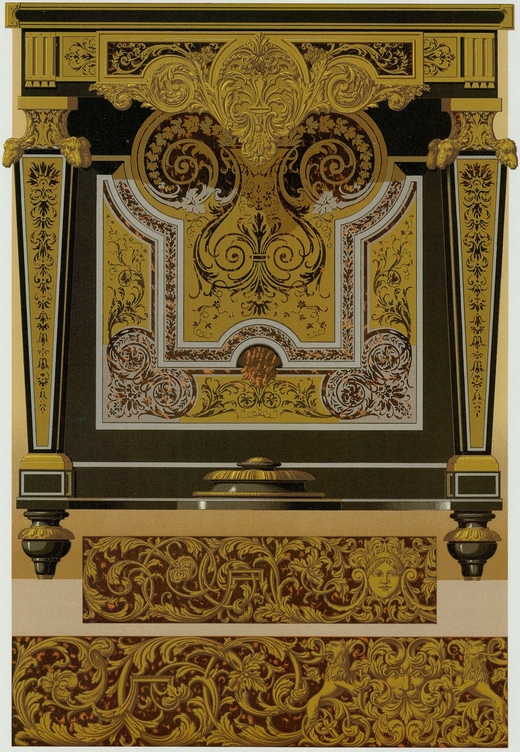
110. 17th Century: Console table by Charles-André Boulle with metallic inlay.
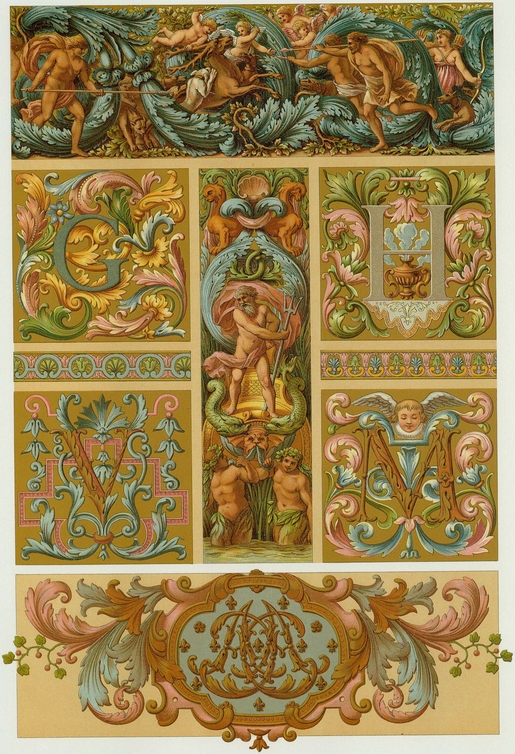
111. 17th Century: From interior decor and illuminated choir books, France.

112. 17th and 18th Centuries: Details from French tapestries and miniature paintings.
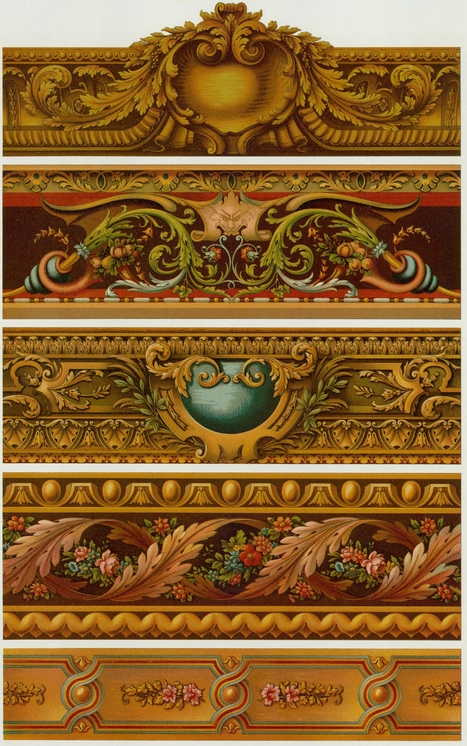
113. 17th and 18th Centuries: Details from French tapestries.

114. 18th Century: Decorative panel by François Boucher, and French tapestry borders.
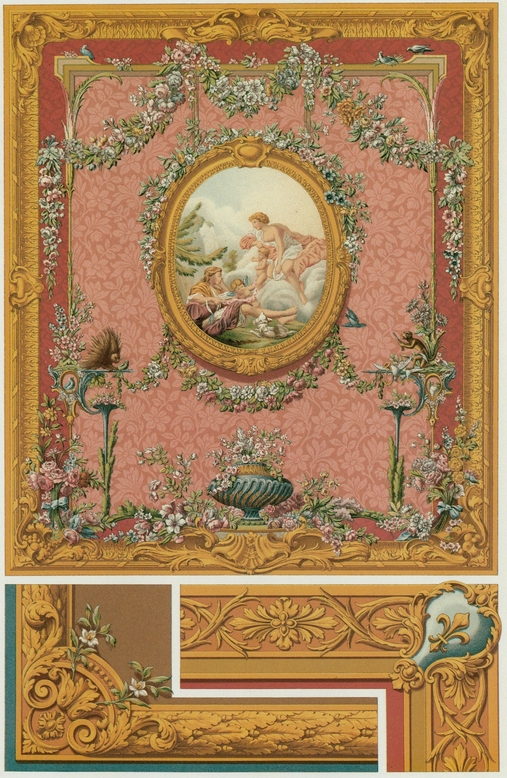
115. 18th Century: Tapestry by Boucher and Louis Tessier; details of tapestry corners.

116. 18th Century: Carved and gilt wall panels from the palace of Versailles.
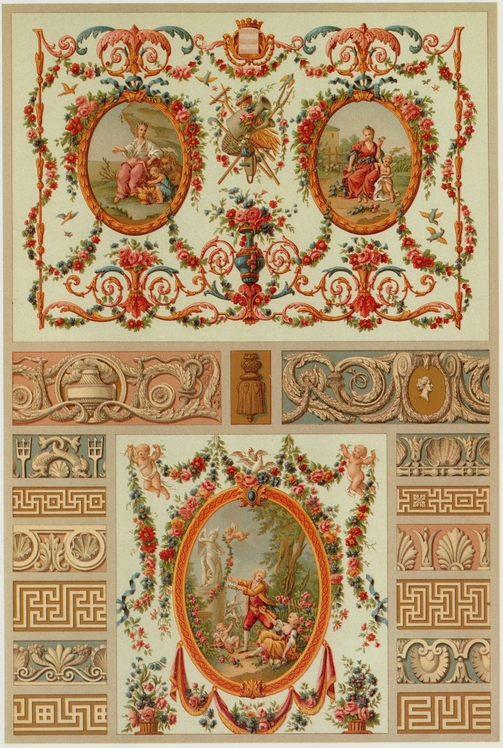
117. 18th Century: Details from French tapestries and wall panels.
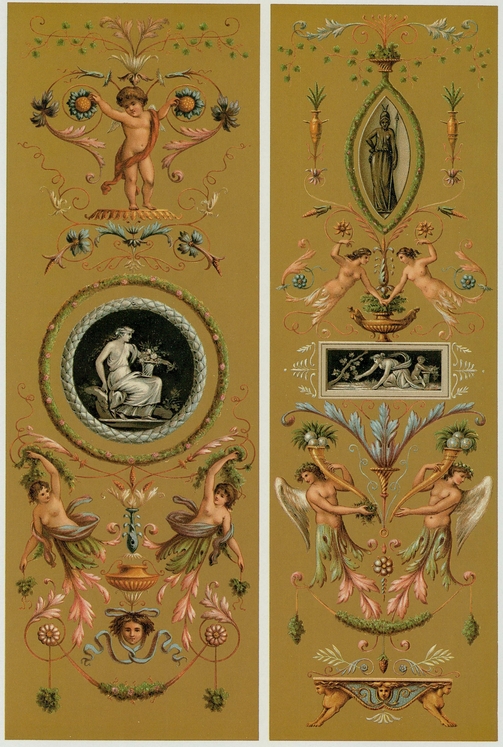
118. 18th Century: Paintings on the glass panes of a Louis XVI armoire.
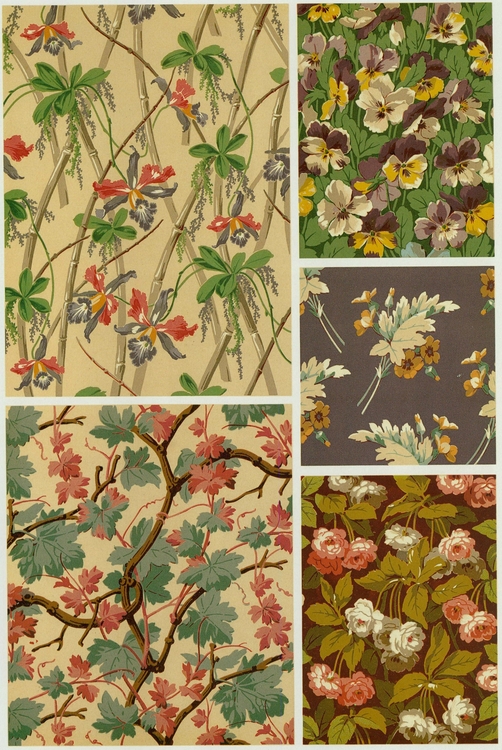
119. 19th Century: Designs from painted fabrics and wallpapers.
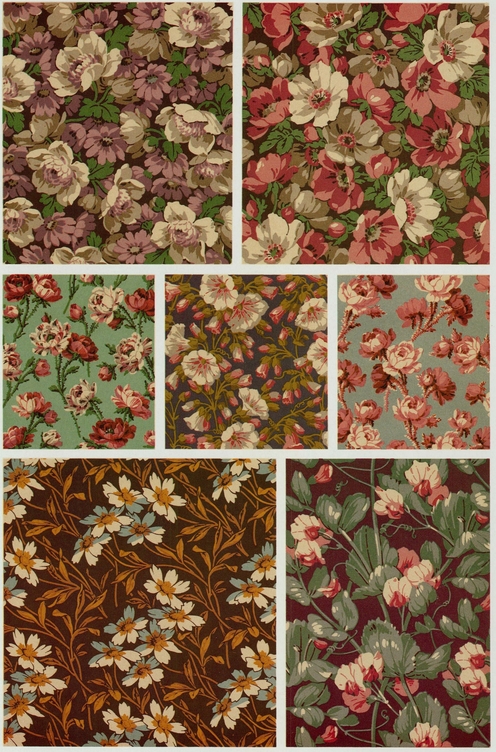
120. 19th Century: Floral designs from printed fabrics.